January 27
Free day and I decide to take it very easy.
Arose early again and was picked up by a taxi at 6AM and driven the short distance to see th monks again. A very different scene than yesterday; no rain and many more people lining the curbs to give alms as the monks pass. I still don’t really know what the hell I’m doing, but have at least a few salvageable shots.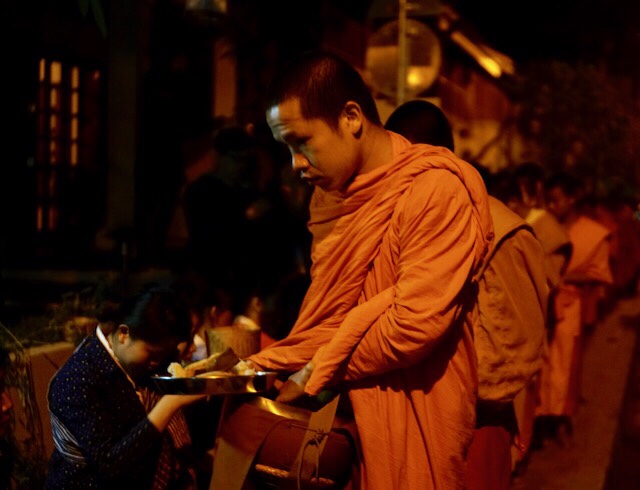 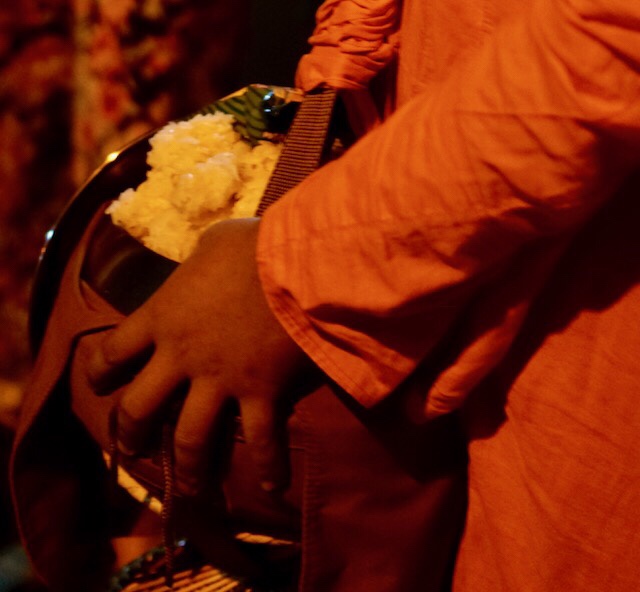 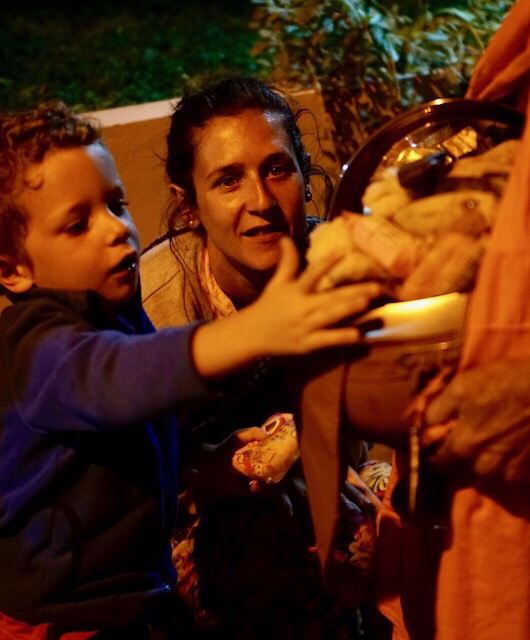 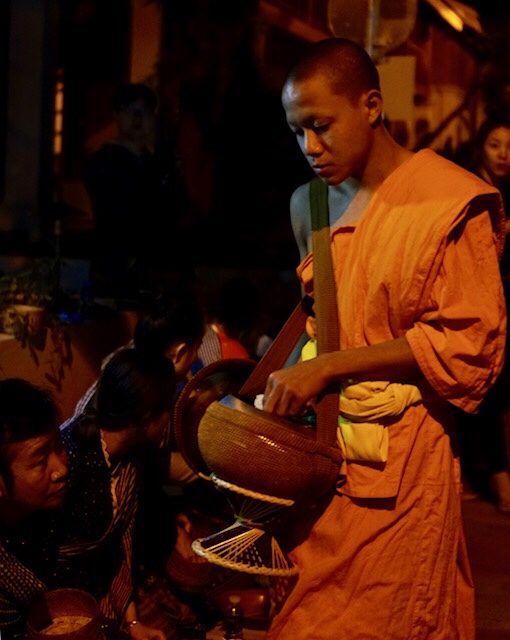 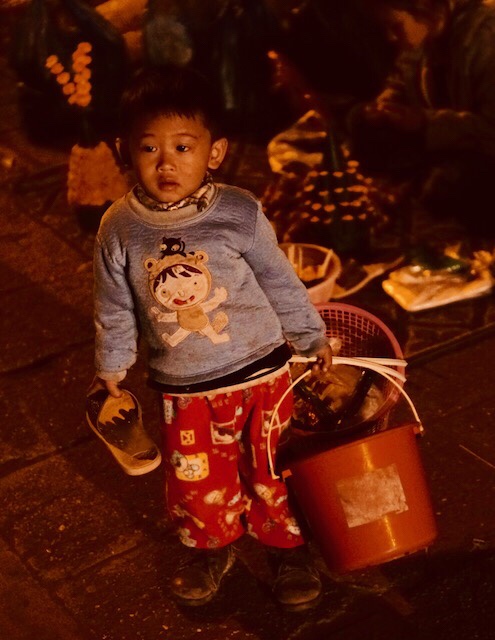 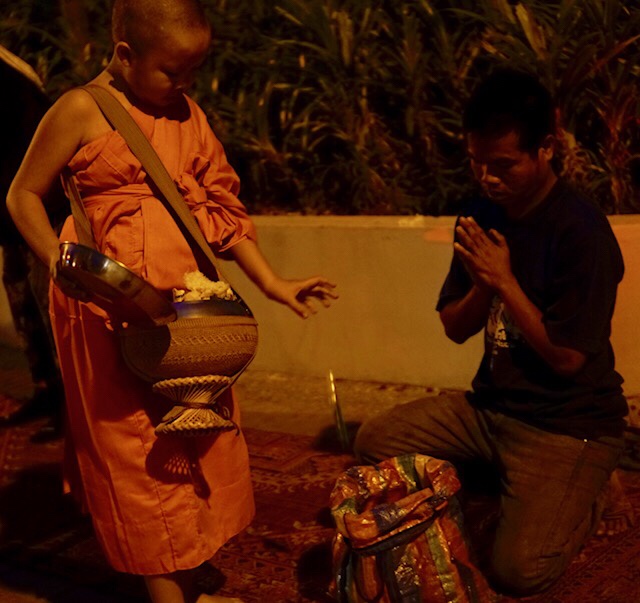 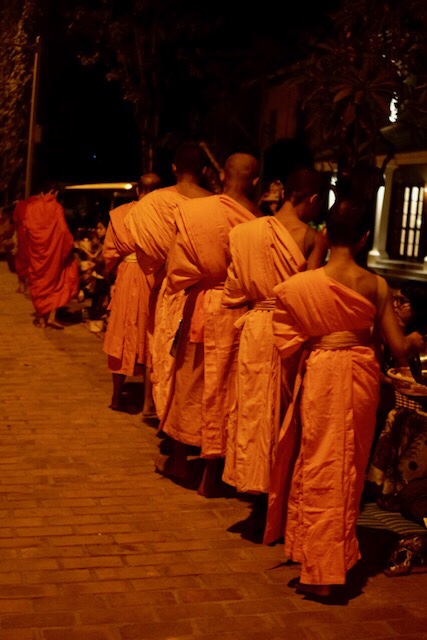
Back to the hotel for breakfast. Carol goes off with four others in the group for a cooking lesson at The Sofitel, including shopping for the food at the local market. They report that it was great fun.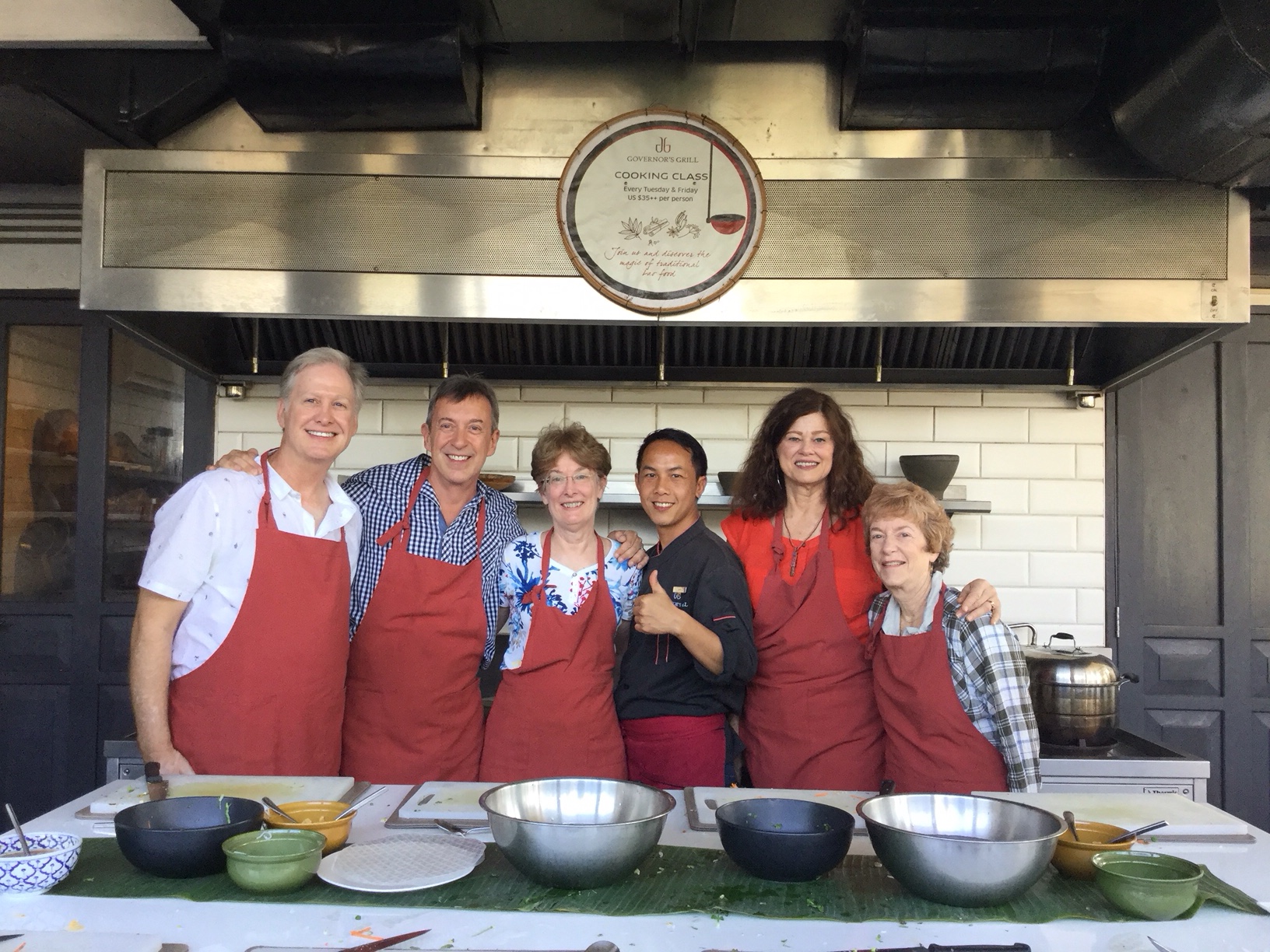
I spent my time farting around with various technical issues, some of which were solved Ann not. Karl spent a lot of time with me on the iPad issues and also looking at and commenting on photos, and showing me some new apps that should help me. He set me up on Google Photos, which should improve access to photos and organization, and downloaded Snapseed a great app for modifying photos.
We meet the group at seven in the lobby and go to dinner. Afterwards, we walk through the night market, buying a few little things and taking photos. 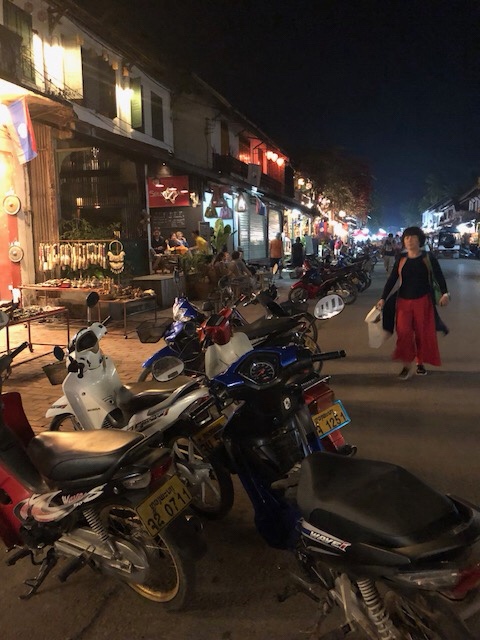 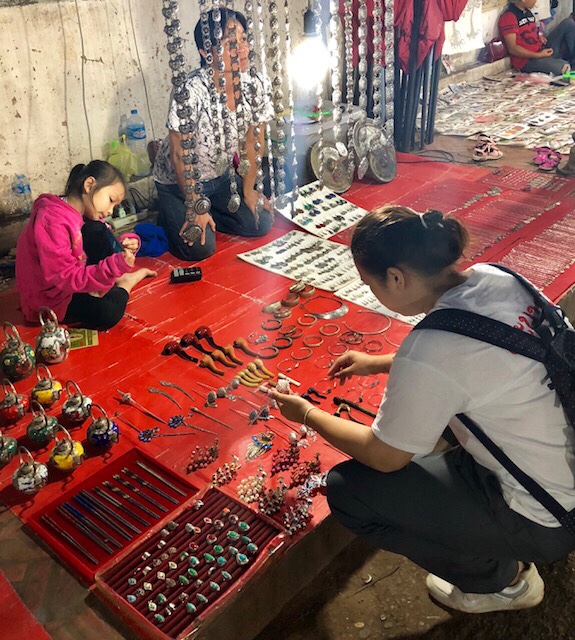 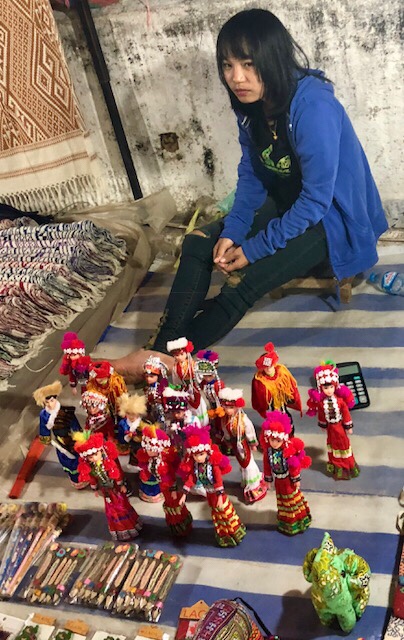 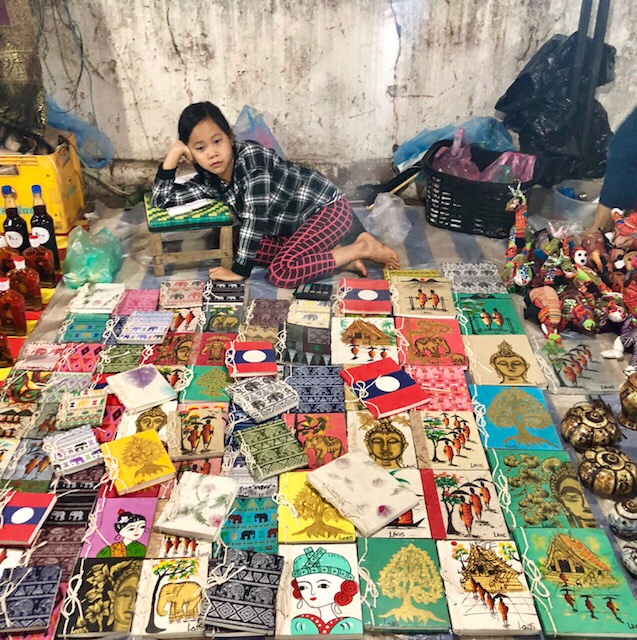 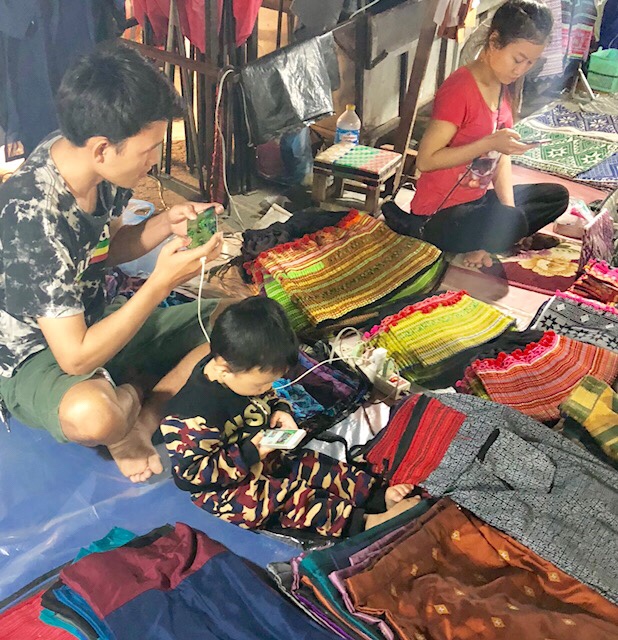
Manage to get lost walking home, take a tuk-tuk driver who doesn’t know where the hell he’s going, so we make him take us back to where we started and find another driver who knows the way to the hotel.
January 27. Forgot to give you this information about Laos. If you’re not interested, scroll down to the first photo below.
Laos was one of two “dominoes” that fell after the Vietnam War. Cambodia, where we will be going next is the second.
The domino theory was a Cold War policy that suggested a communist government in one nation would quickly lead to communist takeovers in neighboring states, each falling like a perfectly aligned row of dominos. In Southeast Asia, the U.S. government used the now-discredited domino theory to justify its involvement in the Vietnam War and its support for a non-communist dictator in South Vietnam. In fact, the American failure to prevent a communist victory in Vietnam had much less of an impact than had been assumed by proponents of the domino theory. With the exception of Laos and Cambodia, communism failed to spread throughout Southeast Asia.
The human history of Laos stretches back more than 10,000 years as stone tools and skulls unearthed in Huaphan and Luang Prabang provinces can confirm. The famous giant jars in Xieng Khouang province and stone columns in Huaphan province date from the neolithic period. Over centuries, rural settlements grew slowly to ‘muang’ (townships) along the Mekong River.
The charismatic King Fa Ngoum (1349-1357) began grouping the muang into a unified Lan Xang Kingdom, basing the capital at Xiengdong Xiengthong, now known as Luang Prabang. Fa Ngoum was also a warrior, and between 1353 and 1371 he invaded and conquered territories that include all of present-day Laos and much of what makes up northern and eastern Thailand. Under his fierce and dynamic rule, construction, development and national defense were organized.
The capital was moved to Vientiane in 1560 during the reign of King Setthathirath, who erected the That Luang Stupa, a venerated religious shrine which is a well known symbol of the Laos nation. The warring Burmese occupied the capital for seven years from 1575, reflecting their dominance over Southeast Asia at that time.
In 1591 the two Laotian kingdoms in Luang Prabang and Vieng Chan were reunited under King Nokeo Koumane. In the 17th century, under the region of King Souliyavongsa, the Kingdom entered its ‘golden age’ and gained increasing attention from Europe. Reports written by Dutch merchants from the East Indian Company describe a land of magnificent palaces, temples, and awe-inspiring religious ceremonies. Vientiene was then considered to be one of the most beautiful cities in Southeast Asia.
At the end of the reign of King Souliyavongsa, feudal lords challenged the throne, which in 1713, led to the division of the country into three Kingdoms: Luang Prabang, Vientiane, and Champassack. This rift and disunity created excellent opportunities for invasion, in particular, from Siam. By the end of the 18th century, most of Laos was under Siamese (Thai) domination, leading to a costly war with Siam in the 1820s that ended in all three Kingdoms being ceded to the Thais.
However, with the expansion of French Indochina in the late 19th century, the Thais eventually relinquished Laos to the French and in 1893, Laos became a French colony. The French organized this territory as a protectorate, with its administrative center at Vientiane, and granted it autonomy in local matters.
The catalyst for change was the WW2 Japanese occupation of Indochina, when a Lao resistance group named Lai Issara was formed to prevent the return of the French. Independence was granted in 1953, but internal feuding between nationalist and communist factions was to continue for several years.
When the USA bombed North Vietnamese troops on the Ho Chi Minh Trail in eastern Laos in 1964, it fomented the conflict between the royalist Vientiane government and the communist Pathet Lao who supported the North Vietnamese. A coalition government was formed, but with the fall of Saigon in 1975, most of the royalists fled to France. The Pathet Lao took control of the country and the Laos People’s Democratic Republic was established in December 1975.
Throughout the 1980s Laos maintained friendly relations with the Vietnamese Communists. Since 1989, there has been a move towards a market economy, and a general relaxation of restrictions, including the emergence of a fledgling tourism industry. In a landmark event, Laos joined hands with its neighbors and became a member of Asean in July 1997.
The country has remained overwhelmingly rural, with the bulk of the population living in villages ranging from just a few to several hundred households. Laos has the lowest population density of any country of Southeast Asia, and its population is also one of the most youthful. A high birth rate is offset by a high rate of infant mortality, as well as by a life expectancy that is significantly below the world average.
There has been a considerable out-migration of people from Laos since the mid-1970s, including not only survivors of the Hmong “secret army” from the Vietnam War (1954–75) but also many of the country’s educated and professional elite. Large communities of Lao and Hmong now live in the United States, Australia, and France.
Laos has considerable mineral reserves. Tin has been mined commercially since colonial times and has remained a major resource; gypsum has become important since the last decades of the 20th century. Gold mining expanded significantly in the early 21st century, with substantial foreign investment. Foreign companies have also worked the country’s granite and limestone deposits.
Laos’s chief exports are garments, electric power, timber and other forest products, coffee, and various metals and minerals. Major imports include foodstuffs, construction and electrical equipment, materials for the garment industry, machinery, and mineral fuels. The country’s main trading partners are Thailand, China, and Vietnam. To a lesser extent, Laos engages in trade with Japan, South Korea, and India. Imports have consistently exceeded exports in value, leaving a significant trade deficit; the gap typically has been filled by foreign aid.
This morning we wake up early to photograph the daily early morning ritual of saffron-clad monks with their black Alms-giving bowls being given offerings from the local people, including the ubiquitous sticky rice. Unfortunately, it’s raining so conditions for Photography are very bad and the results reflect that.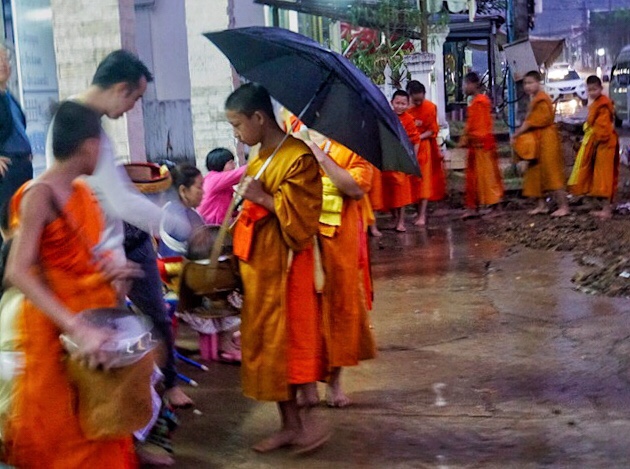
We return to our hotel and after breakfast, we enjoy a short-guided walking tour visiting the city’s oldest and most beautiful temples. 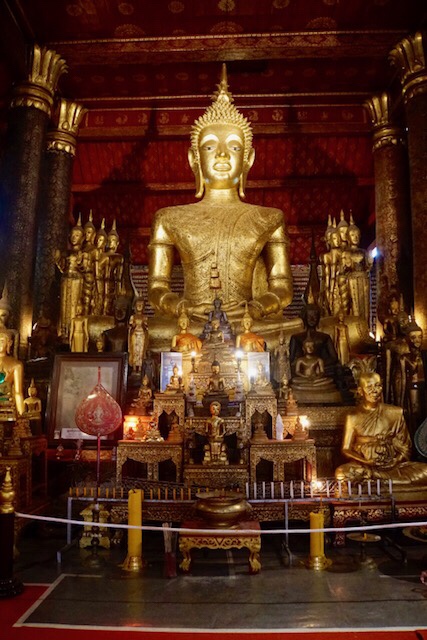  We walked through a small market behind one of the temples. We walked through a small market behind one of the temples.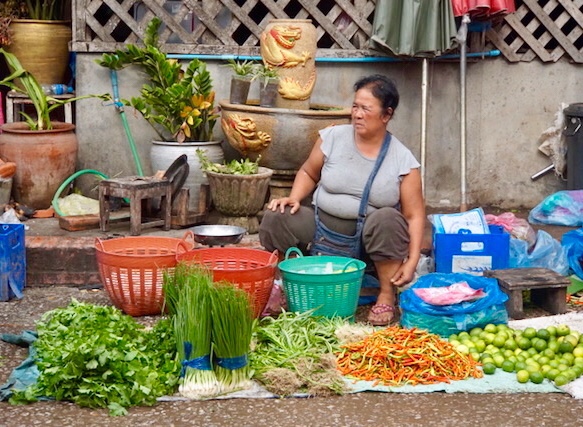  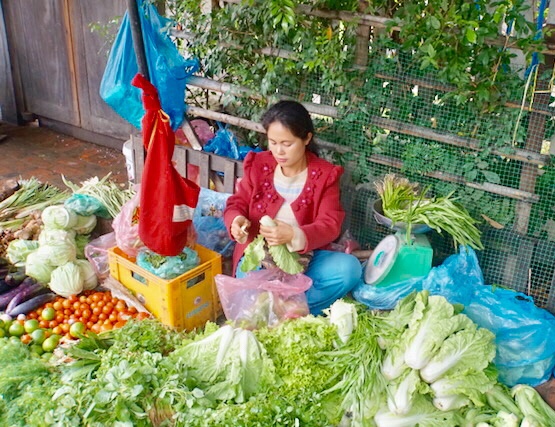
Today we also visited a local Hmong Village. 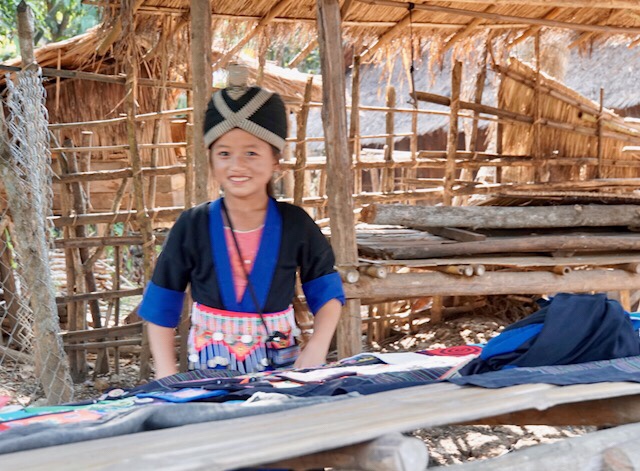 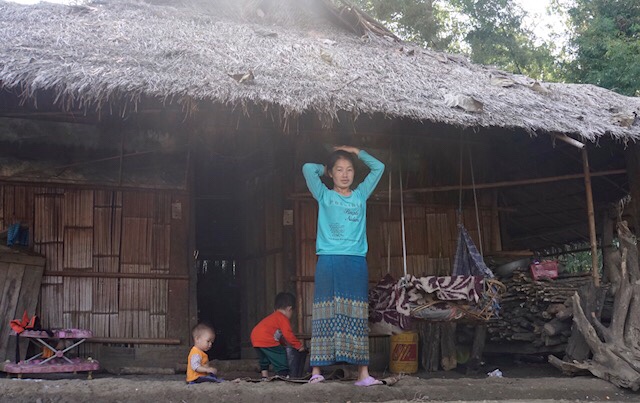 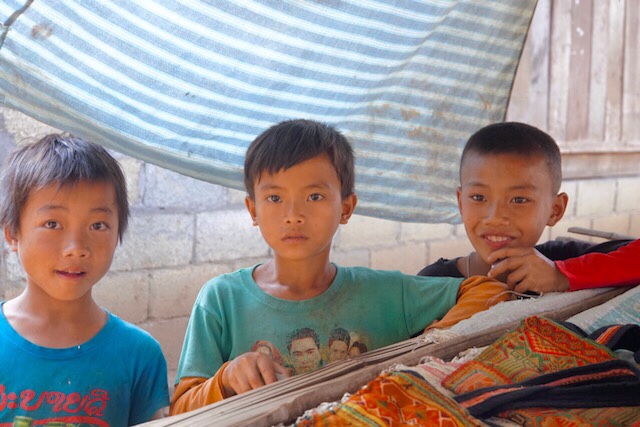 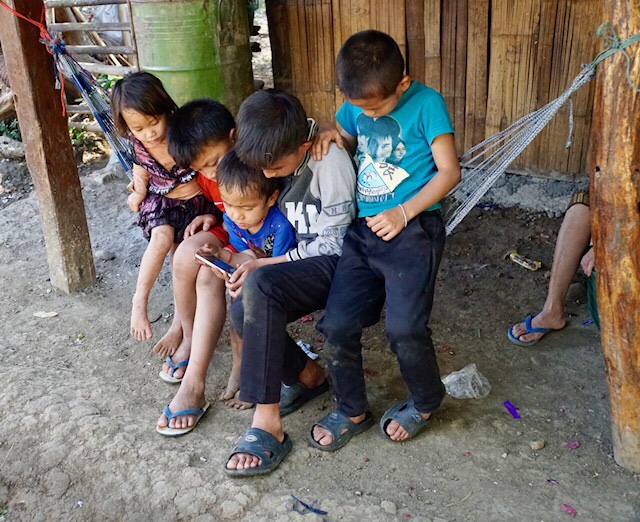
We drove on to the spectacular Khouangsi Waterfall and walked up to the top of the falls. 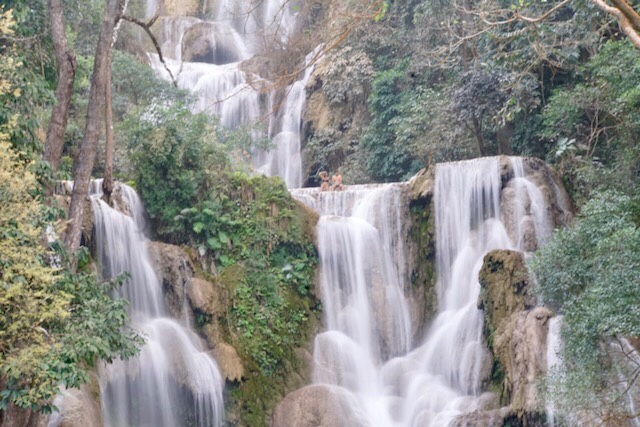 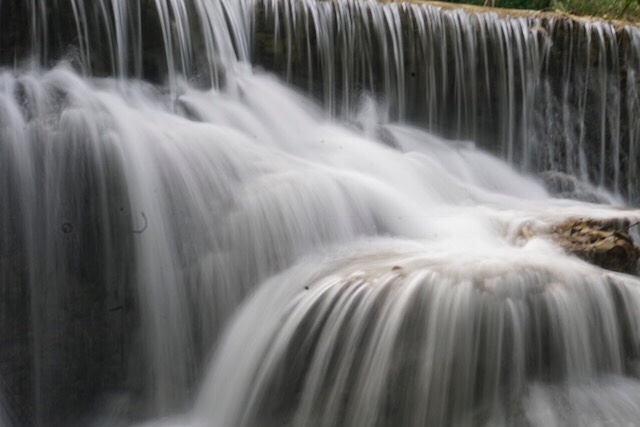 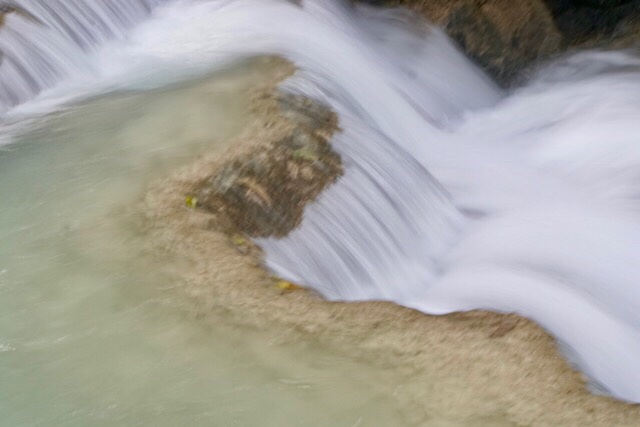
We return to Luang Prabang and after another great dinner at the Blue Lagoon, we explore the street night market.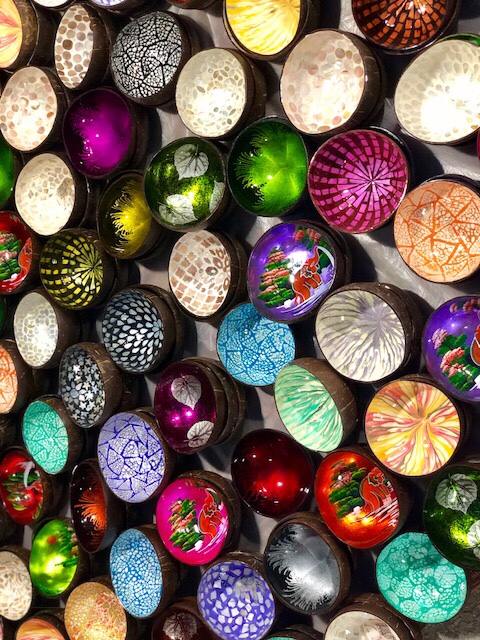 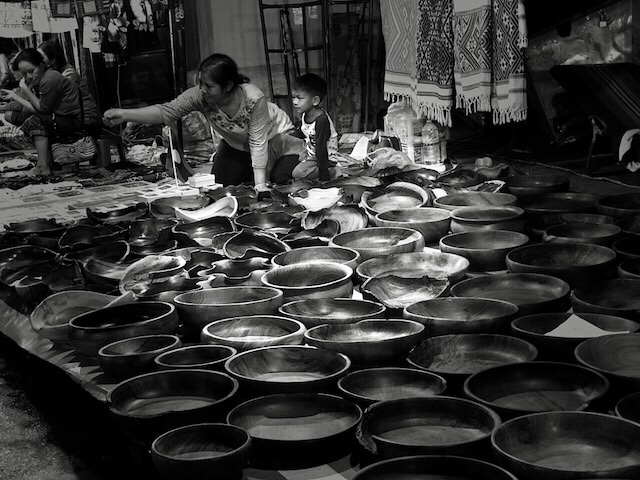 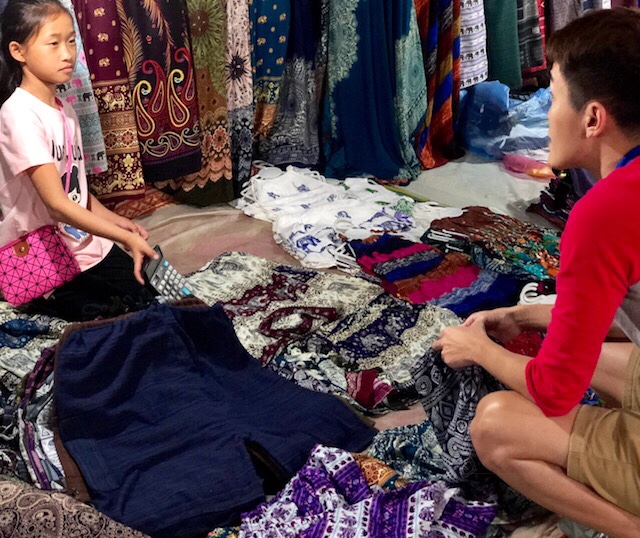 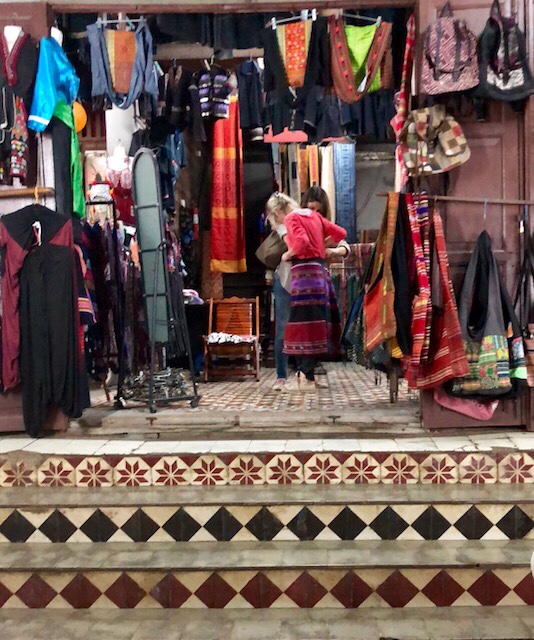 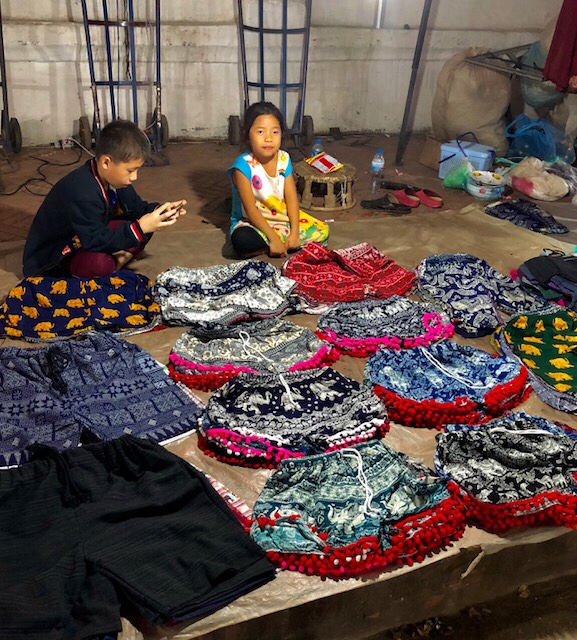 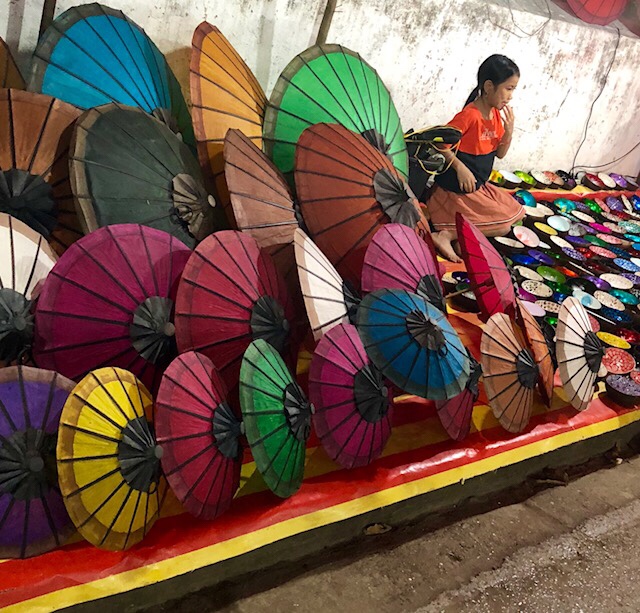 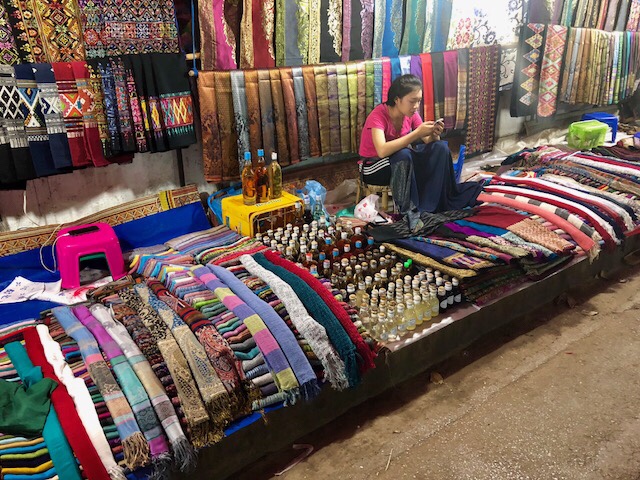
January 26. After breakfast at the hotel, with elephants across the river,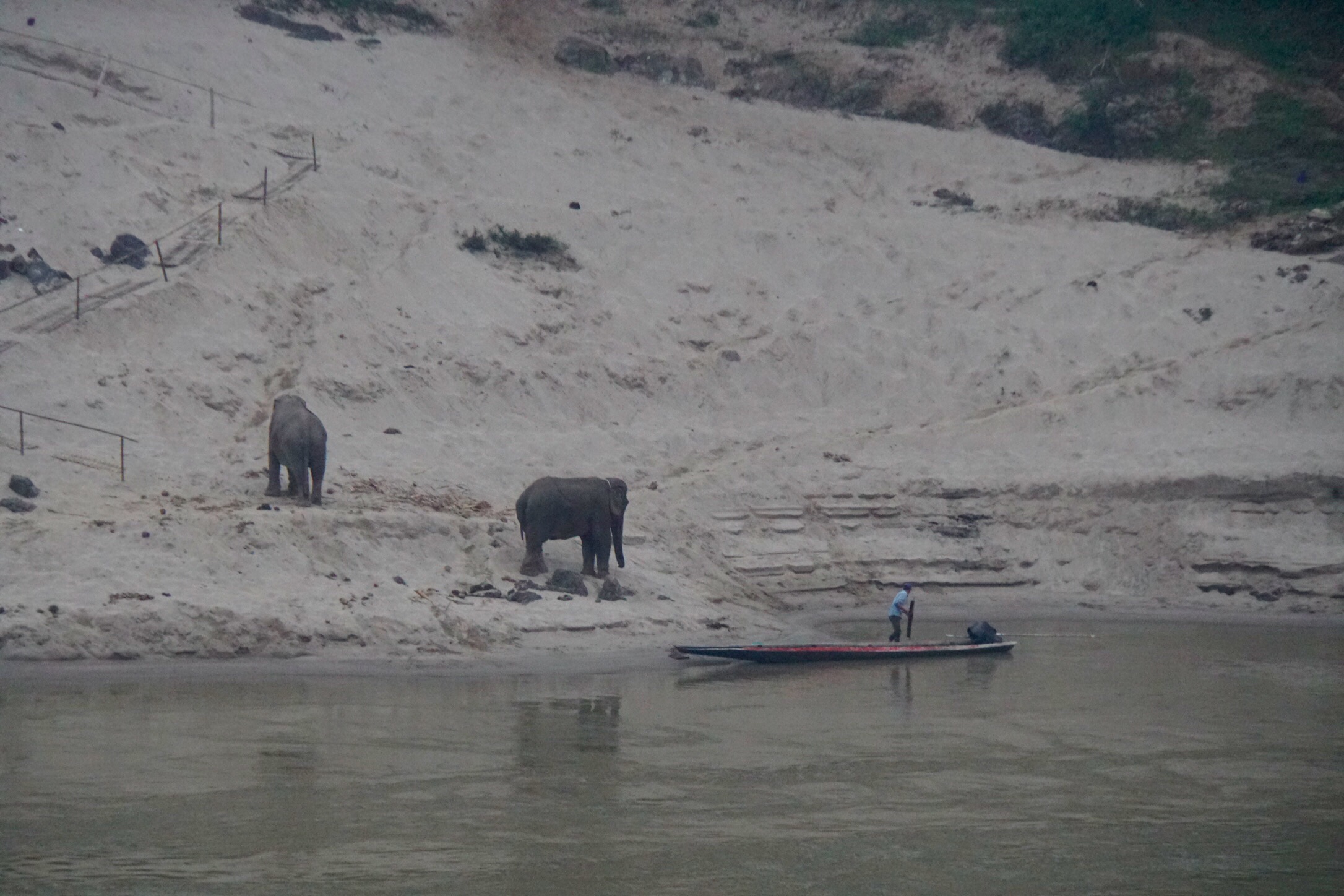
we again board our private boat for the continuation of our Mekong river trip to Luang Prabang. 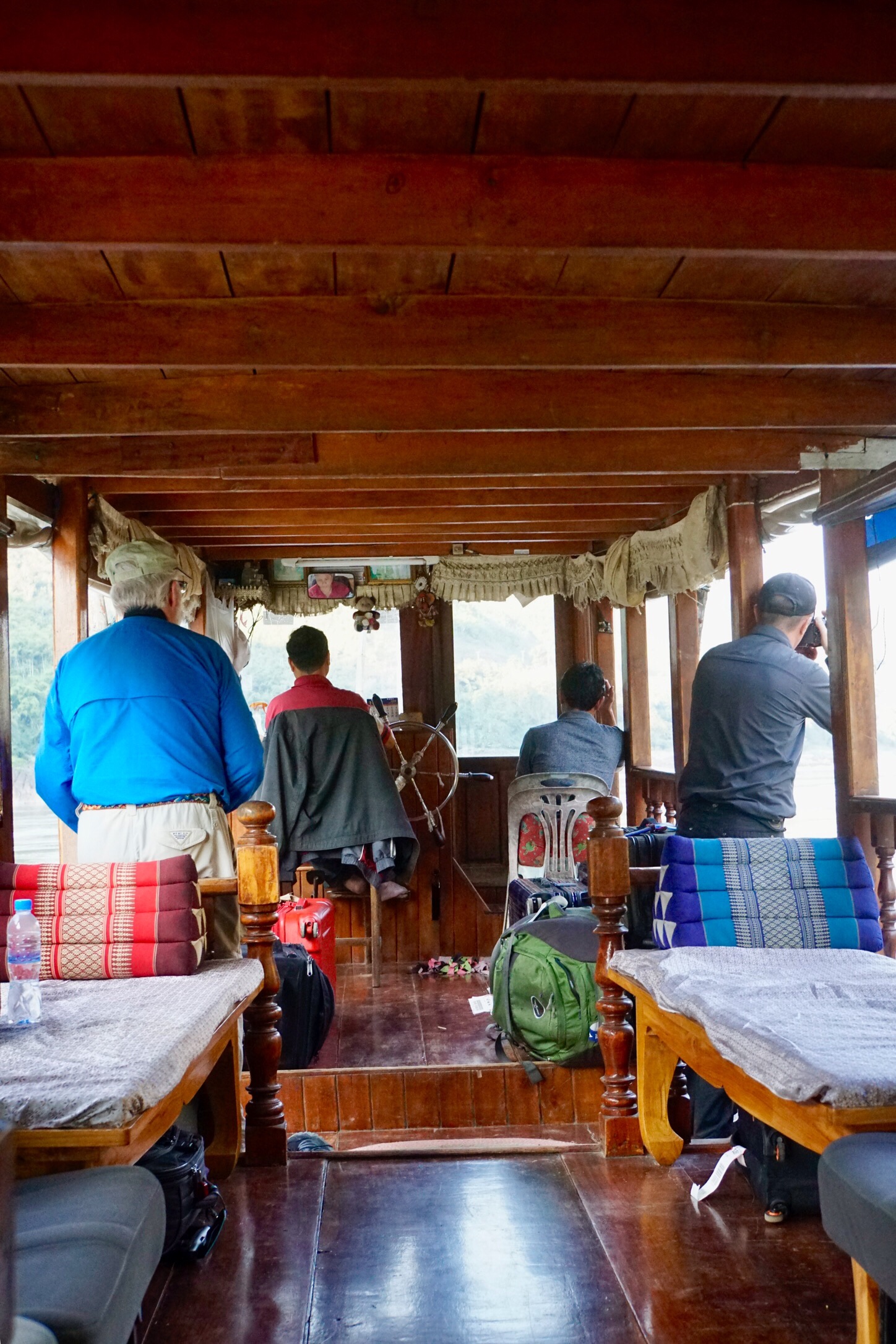 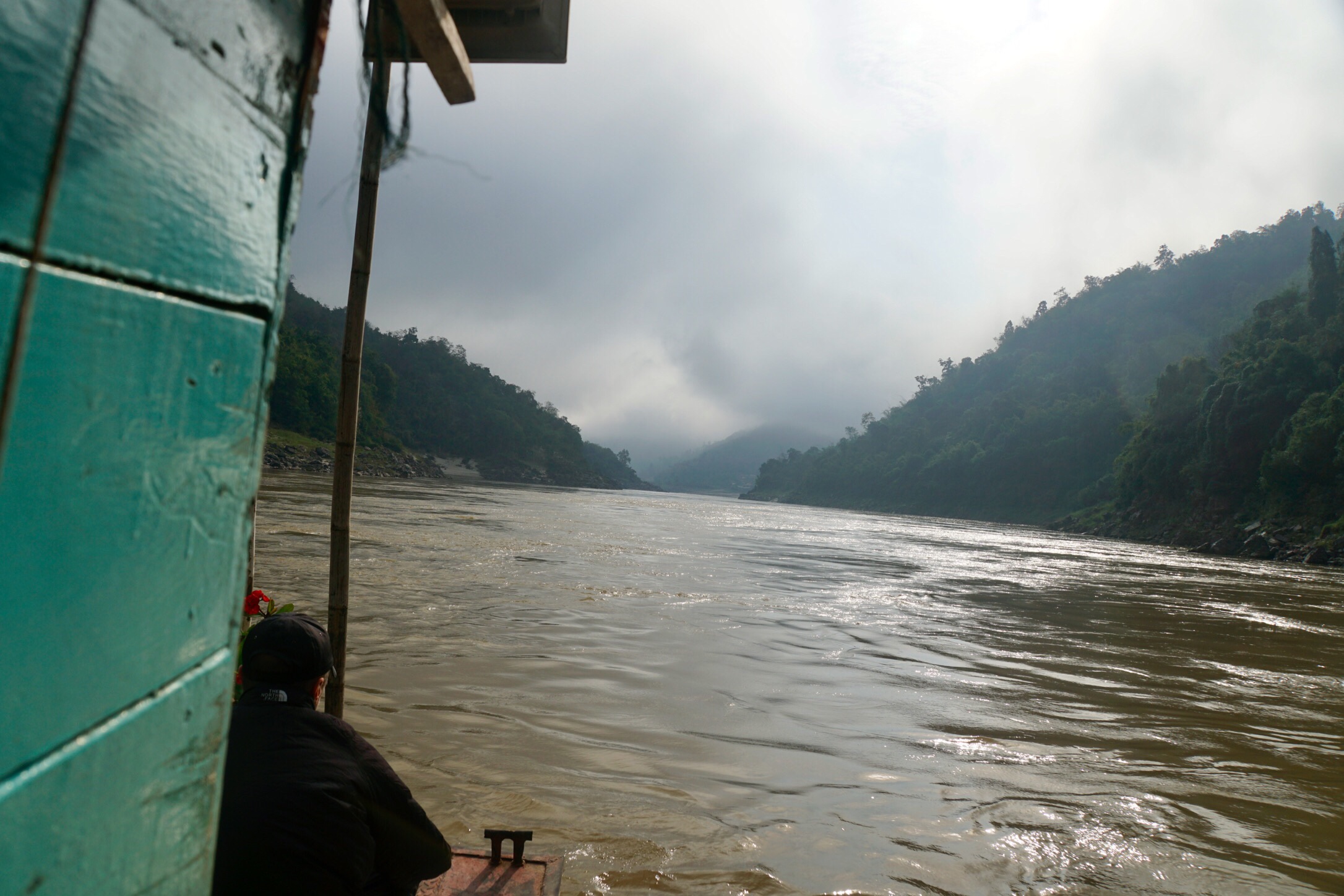
We stop at a small town where we are greeted by kids on the beach. I stay on the boat, because my hip is bothering me from yesterday’s accident.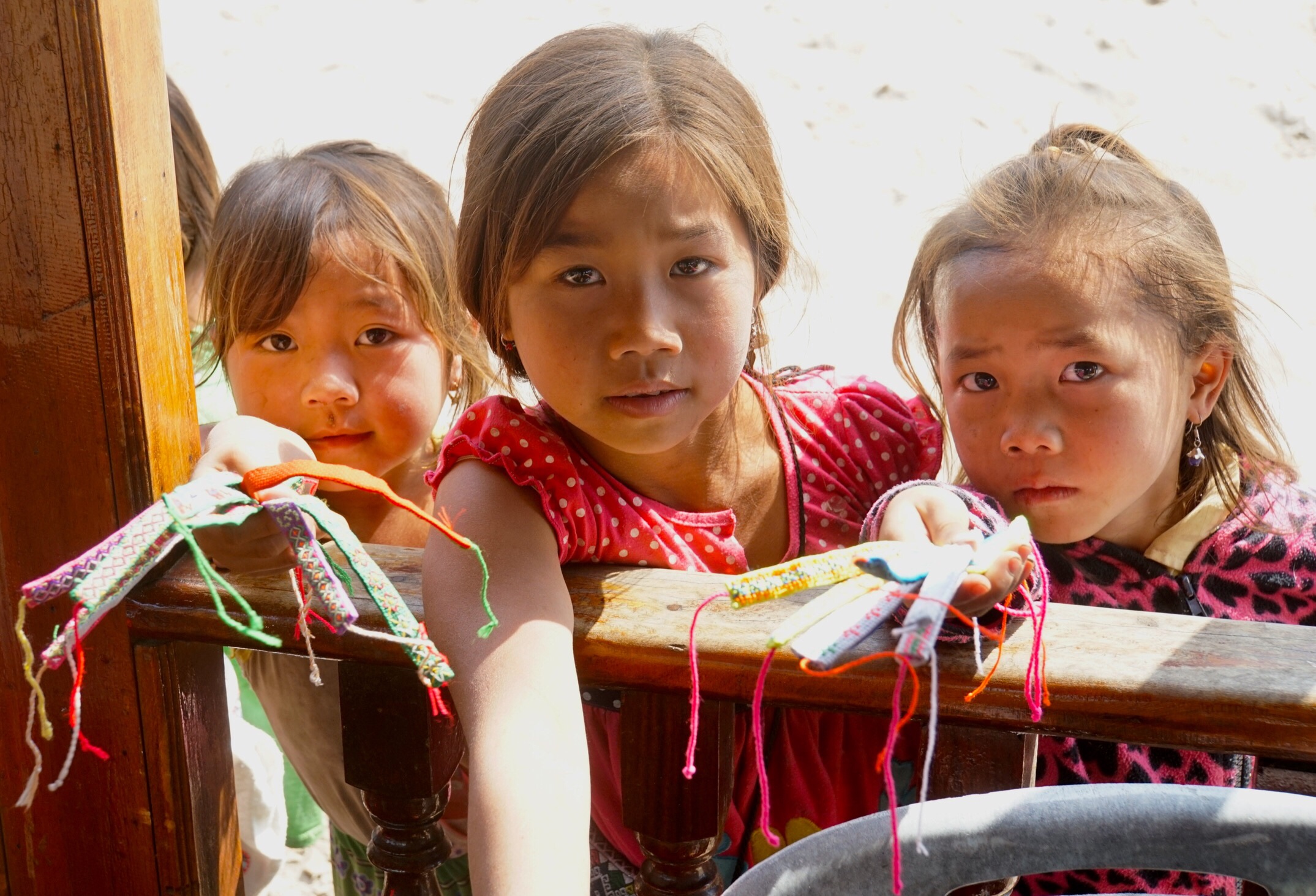  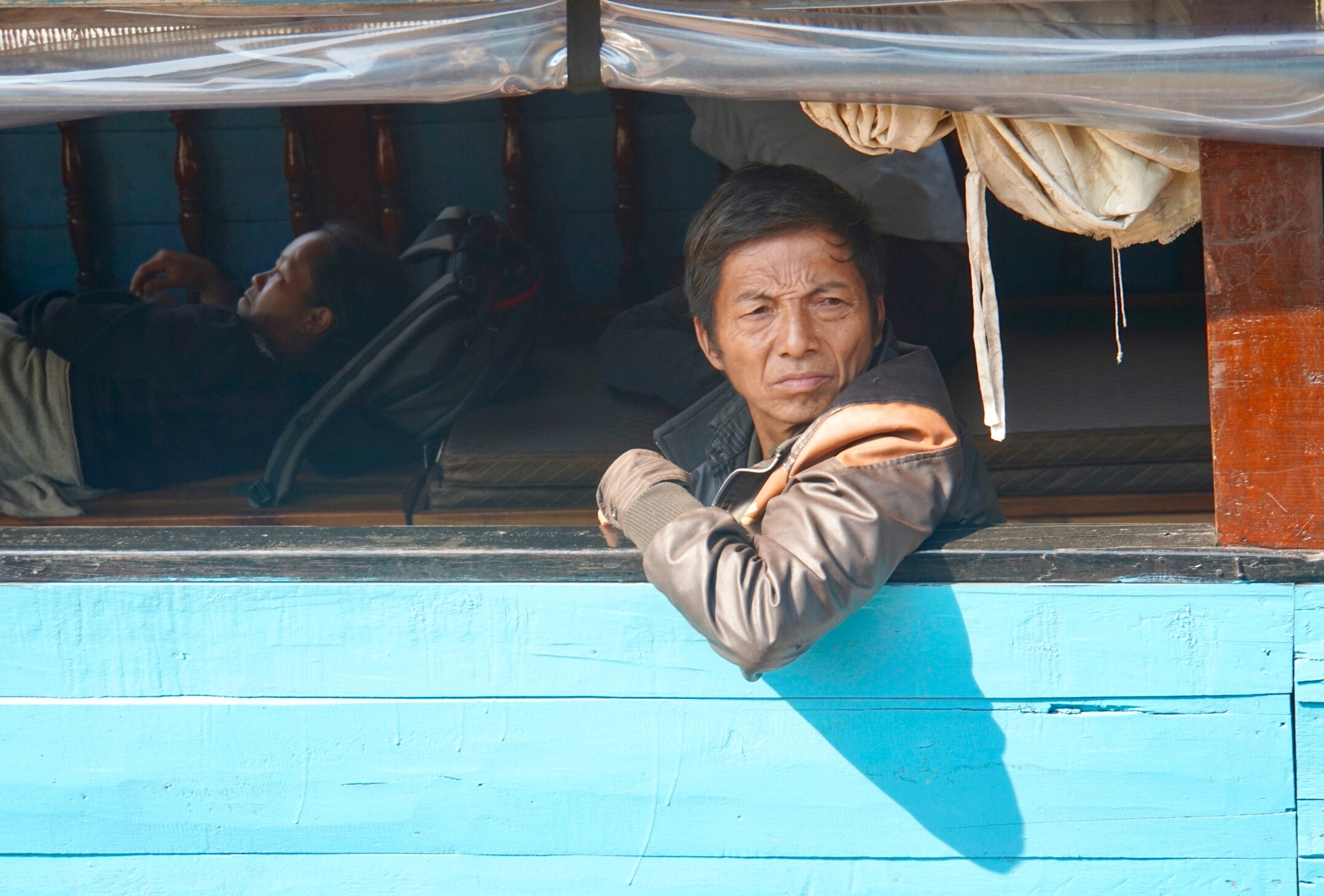
Along the way we visit the amazing Pok Au caves, that contain a thousand Buddha statues, and, once again, I forego the climb and just glimpse the scene from the boat. 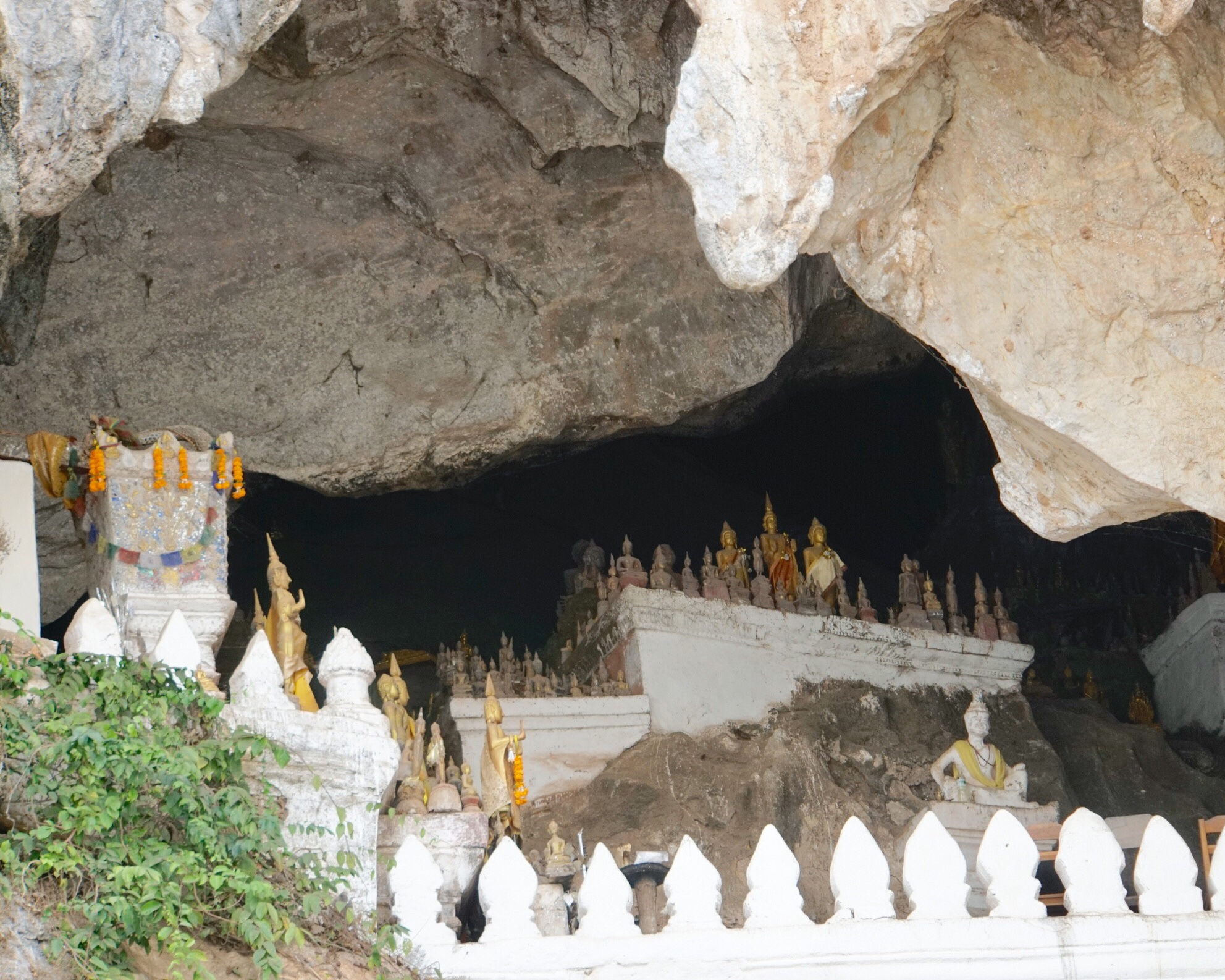 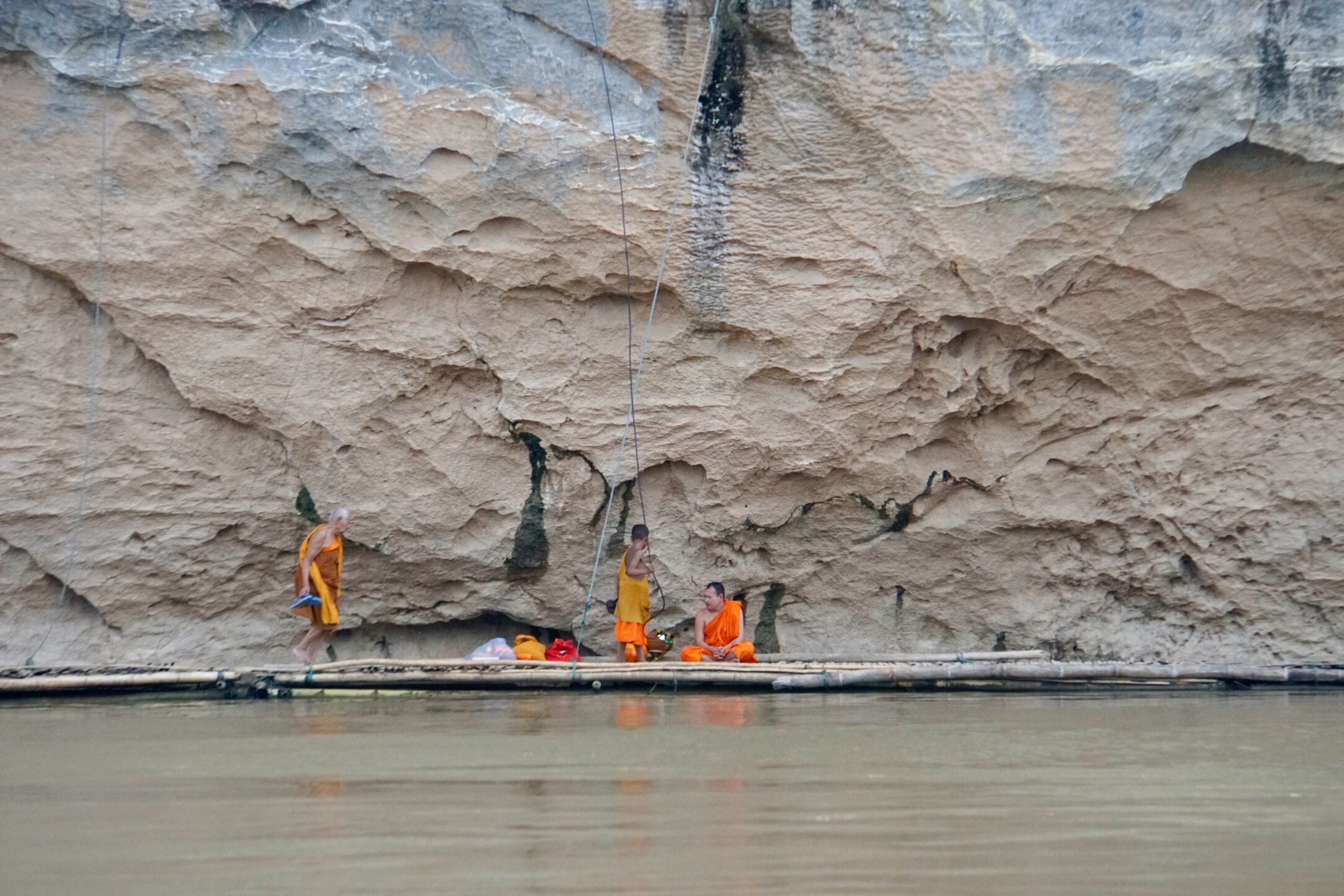 We drive on to the UNESCO World Heritage site of Luang Prabang, where we check into our hotel. Immediately after checking in, our guide, Pan, leader, Karl, and Carol and I set out to the Luang Prabang hospital to have my hip examined. The doctor concludes that it’s a muscle problem, that nothing is broken and X-rays are not necessary. He prescribes painkillers and muscle relaxants and we drive back to the hotel and prepare to meet the group for dinner. This all comes as quite a relief tome, as I had myself on a plane heading home. The total bill for doctor and all meds is $7. We drive on to the UNESCO World Heritage site of Luang Prabang, where we check into our hotel. Immediately after checking in, our guide, Pan, leader, Karl, and Carol and I set out to the Luang Prabang hospital to have my hip examined. The doctor concludes that it’s a muscle problem, that nothing is broken and X-rays are not necessary. He prescribes painkillers and muscle relaxants and we drive back to the hotel and prepare to meet the group for dinner. This all comes as quite a relief tome, as I had myself on a plane heading home. The total bill for doctor and all meds is $7.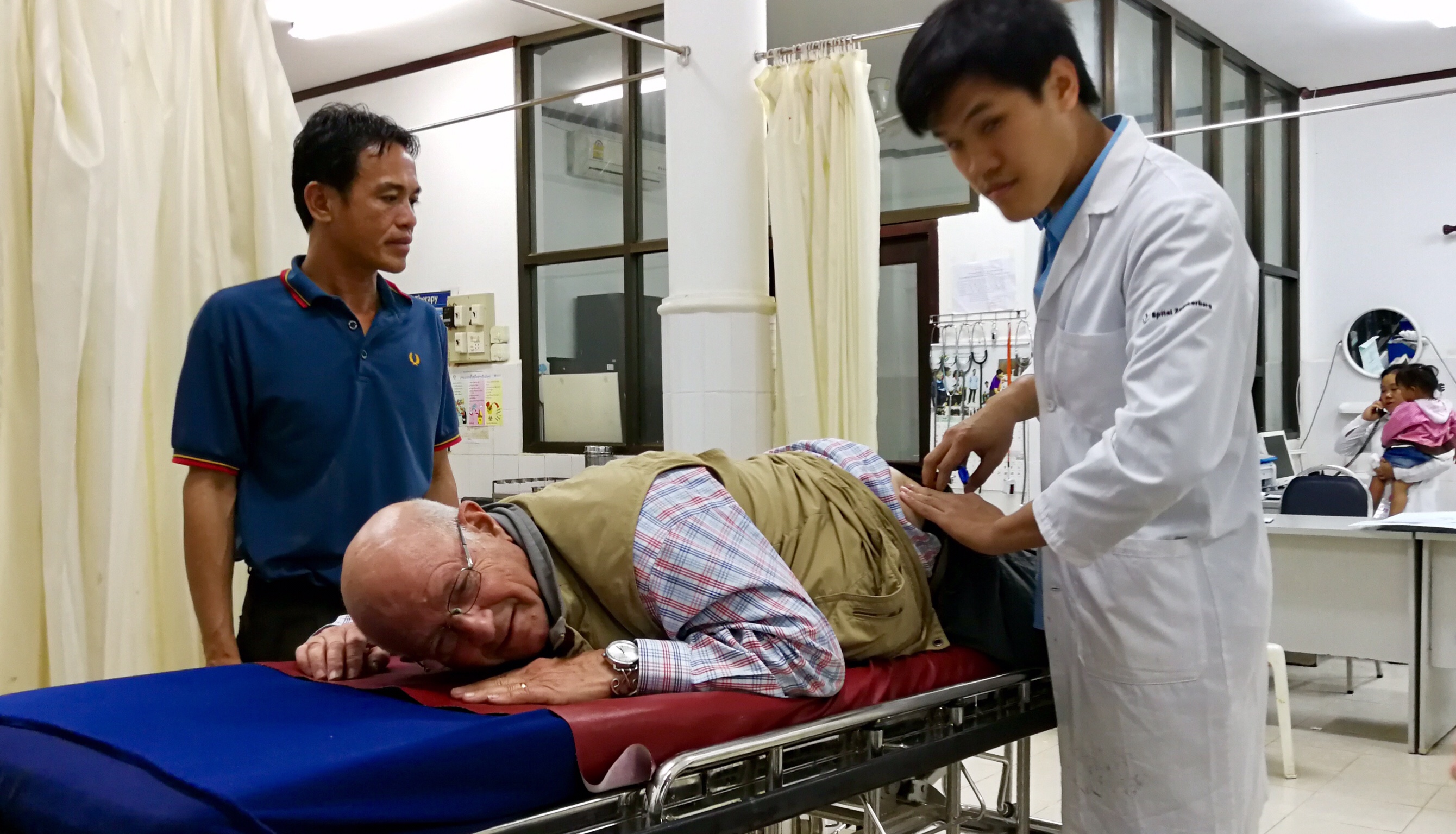
Dinner in a hopping part of Luang Prabang, at Blue Lagoon, is excellent. Back to the hotel to get rest for early wake up.
THIS THING IS TOTALLY SCREWED UP, SO I CANT ADD PICTURES. AS I HAVE NEITHER THE TIME NOR PATIENCE TO DO THIS, THIS WILL BE THE LAST POST UNTIL I MANAGE TO GET IT FIXED, AFTER WHICH I’LL ADD POSTS ON A DAILY BASIS. SORRY.
We wake up early this morning for our supposed one hour van ride to the border town of Chiang Kong. Unfortunately our trip is interrupted when, coming down a mountain road, the brakes on the bus fail, we careen off and onto a side dirt road, run over several metal markers and come crashing to a halt, several of us flying through the bus. Fortunately, while most all of us have bumps, bruises and/or cuts, none of us appears to be seriously injured. Karl, our leader has double and triple checked with us on this, since their are good medical facilities in Thailand, but not for the next two days in Laos. We’re all somewhat shaken by the experience, though, recalling news stories we’ve read about tour buses careening off of mountains, with no survivors. Some might consider this a reason not to travel, but accidents, being accidents, can and do happen any time or place. Thailand has strict rules regarding vehicle safety and the tour operator is looking into whether the vehicles were maintained and inspected as required. One thing for sure, though: we’ll damn sure be wearing our seatbelts for the rest of the trip.
We continue on to the border, in two vans that have been sent to rescue us. We meet our Laotian guide, Pan, who escorts us across the river to Haui Xia, Laos. On the Laotian side our immigration papers are processed and we are delivered to our private boat for our two day river cruise to Luang Prabang. We spend the day on the boat enjoying and photographing along the way. The quiet day is especially welcome after the near disaster.
Tonight, after the leisurely river cruise on the scenic Mekong we arrive at Pak Beng, a sleepy jungle settlement where we check in to the hotel, and have dinner there.
January 24. After a delicious breakfast (all of the meals are described by our itinerary as “delicious”), we meet our English speaking guide and our private van and depart to visit and photograph the famous long neck hill tribe. One might have mixed feelings about photographing these women. Some might think it unseemly, perhaps treating them as sort of freaks. I must say, though, it seemed to us that these women were very comfortable being photographed and maintained their dignity throughout. The community is well paid for permitting the photography, and the crafts they sell provide additional revenue, much of which is sent to relatives in Myanmar. So, bottom line, I came way feeling quite okay about the experience. And Carol agreed.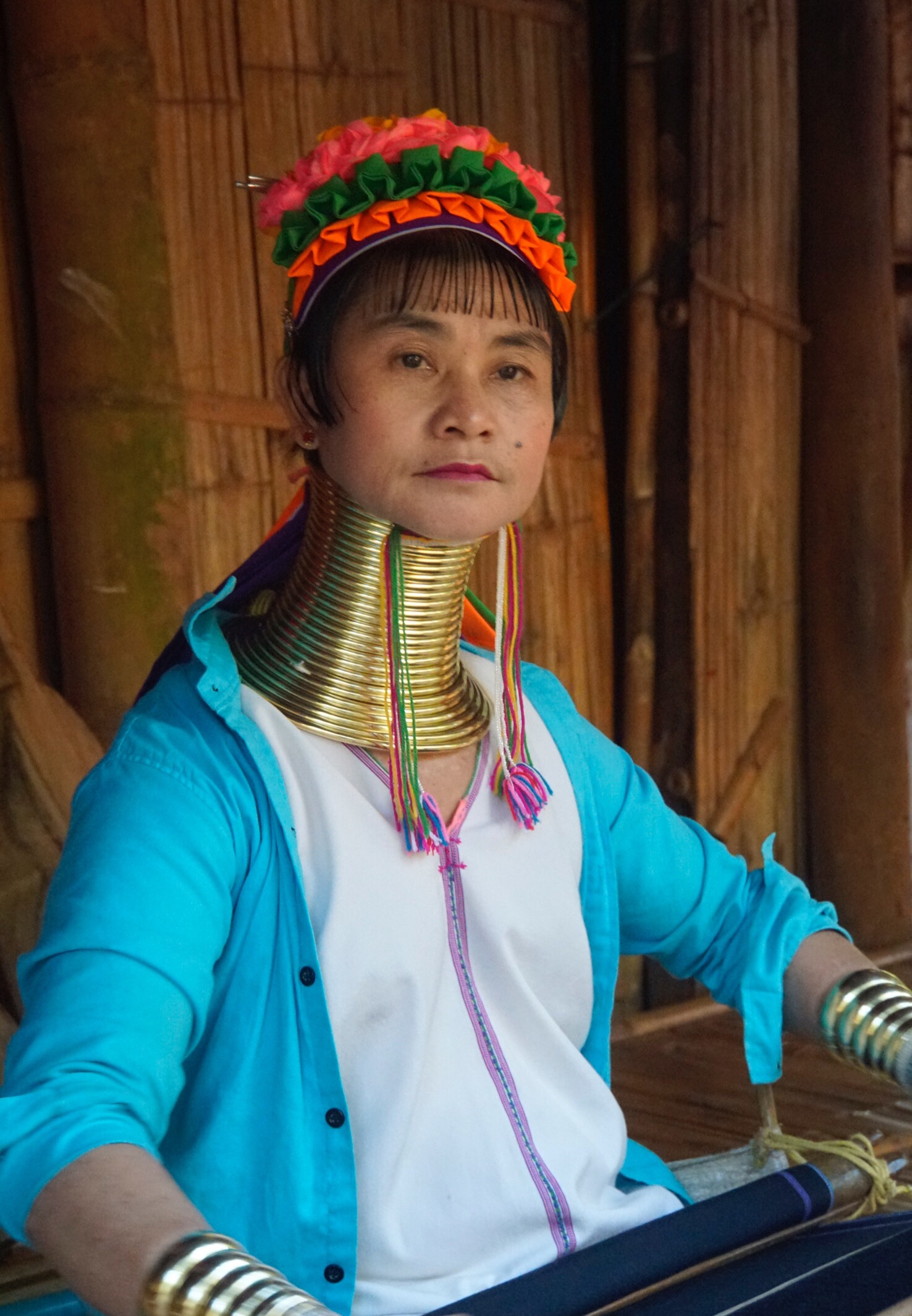 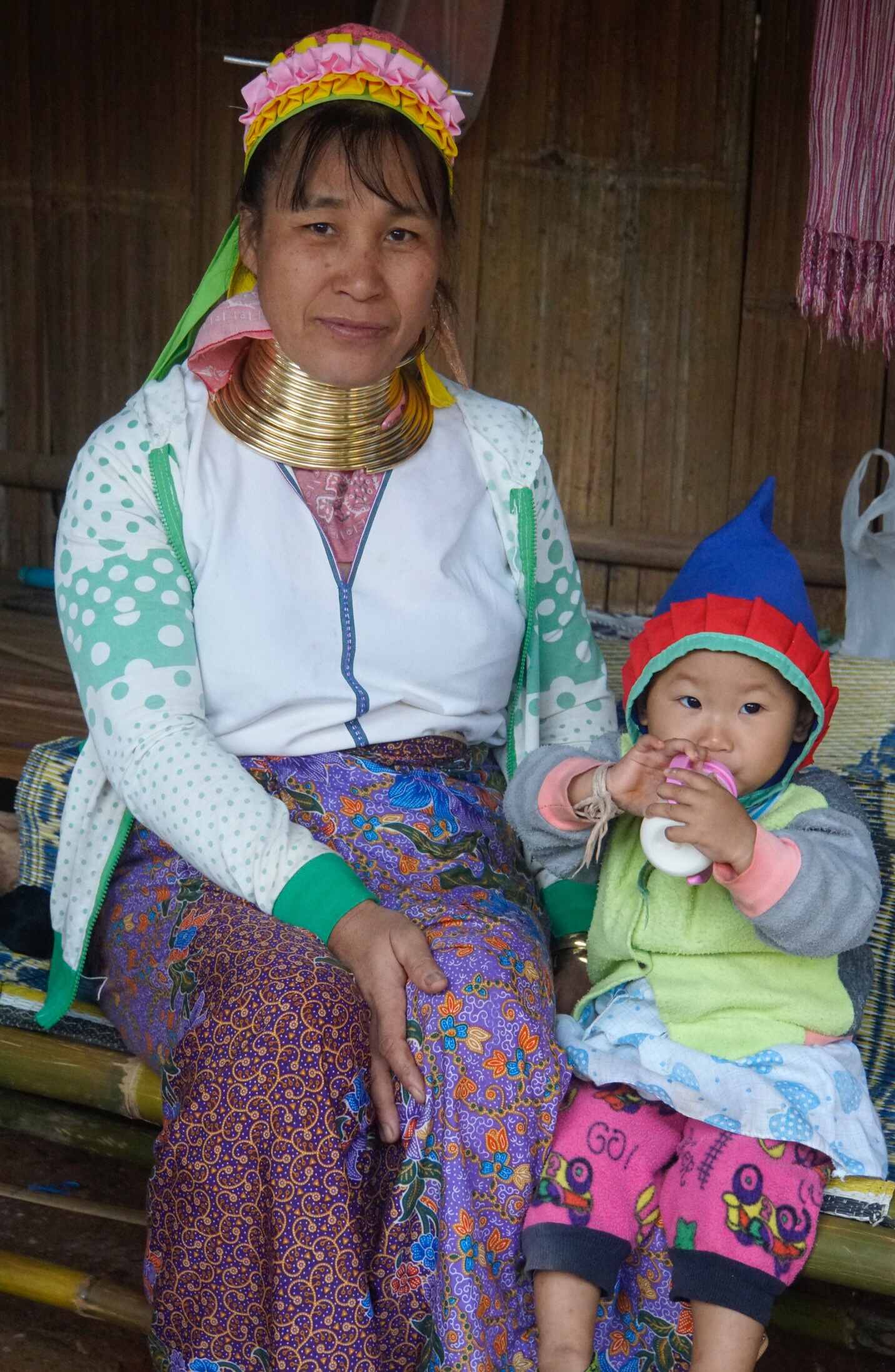 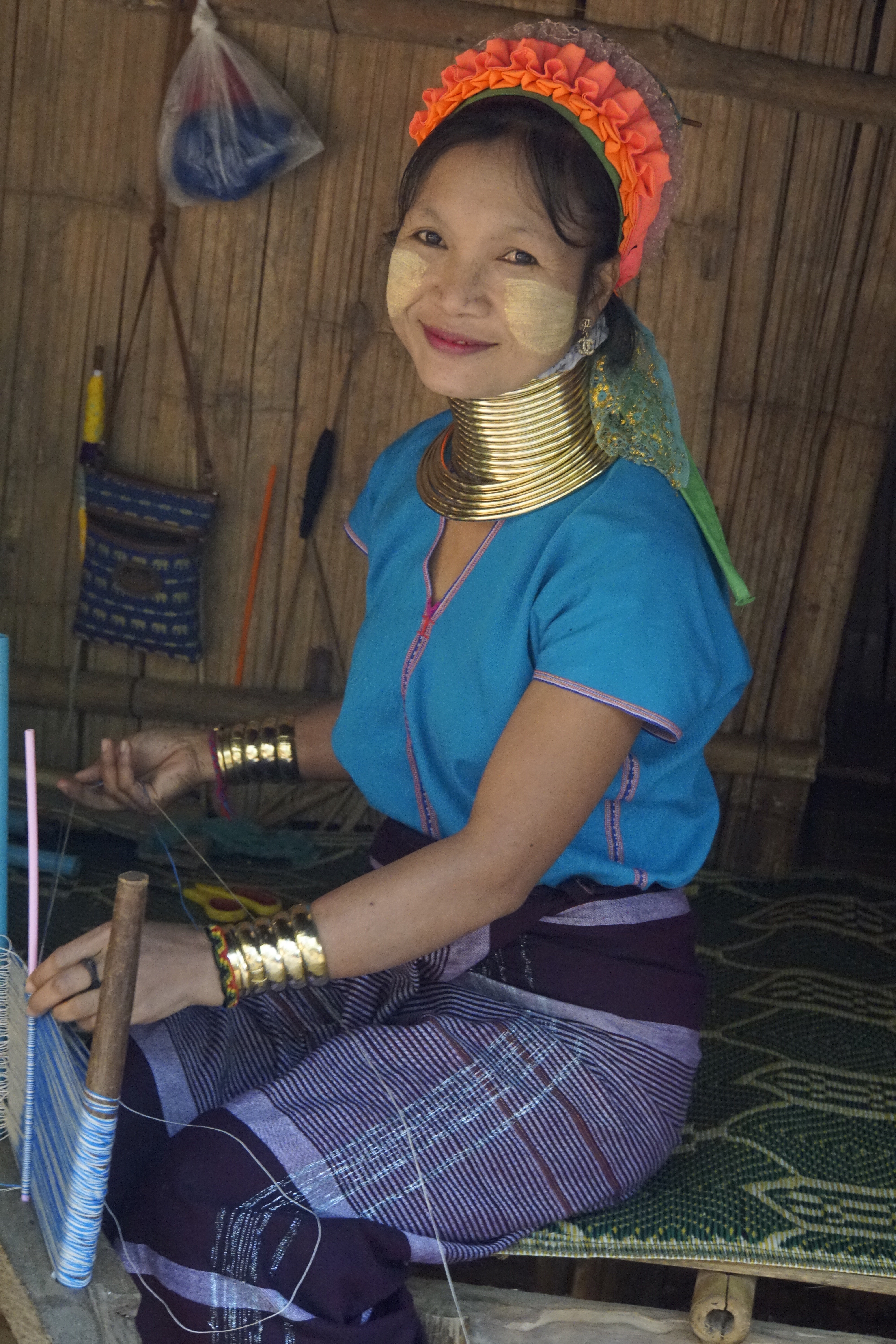 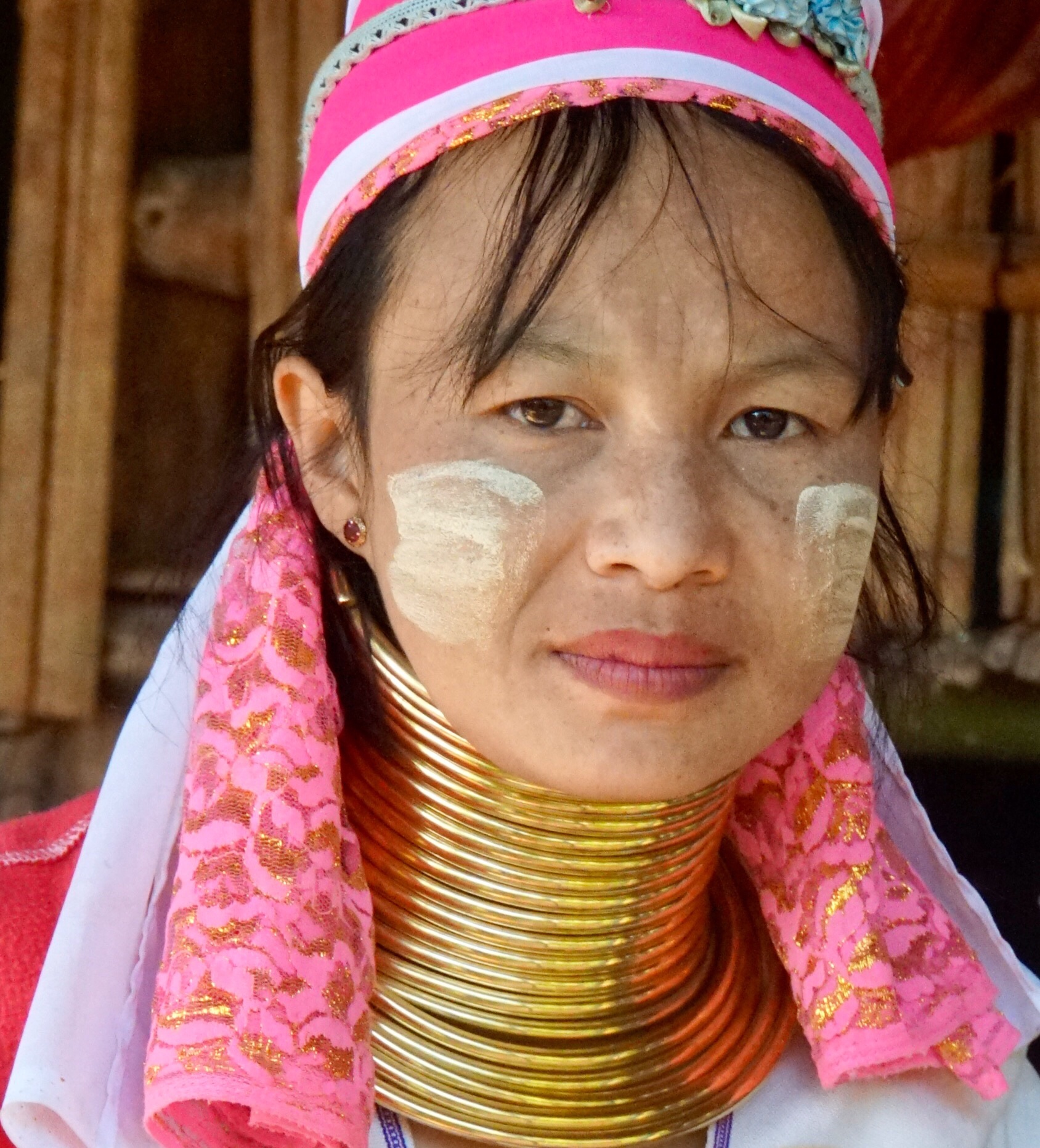 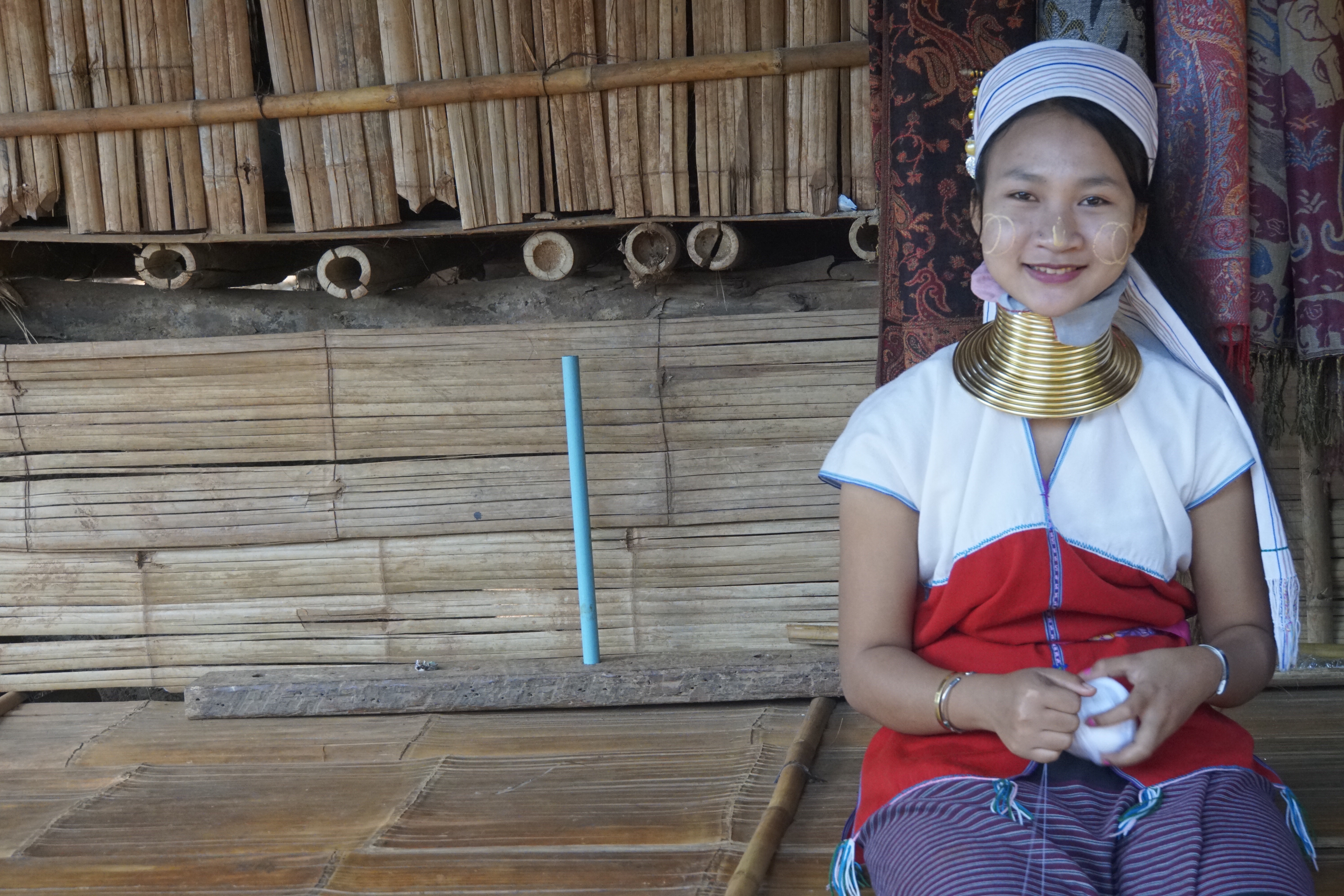 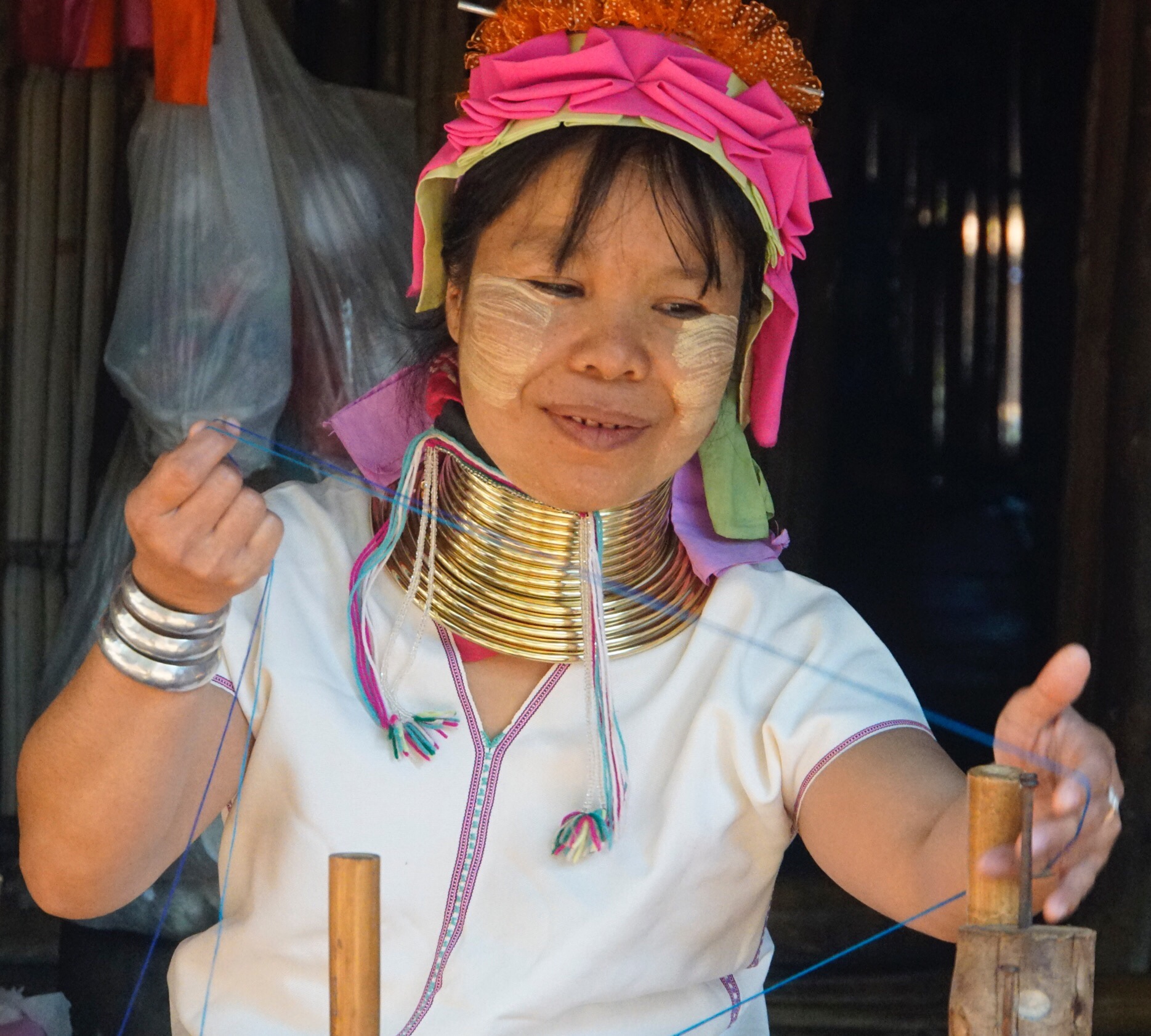 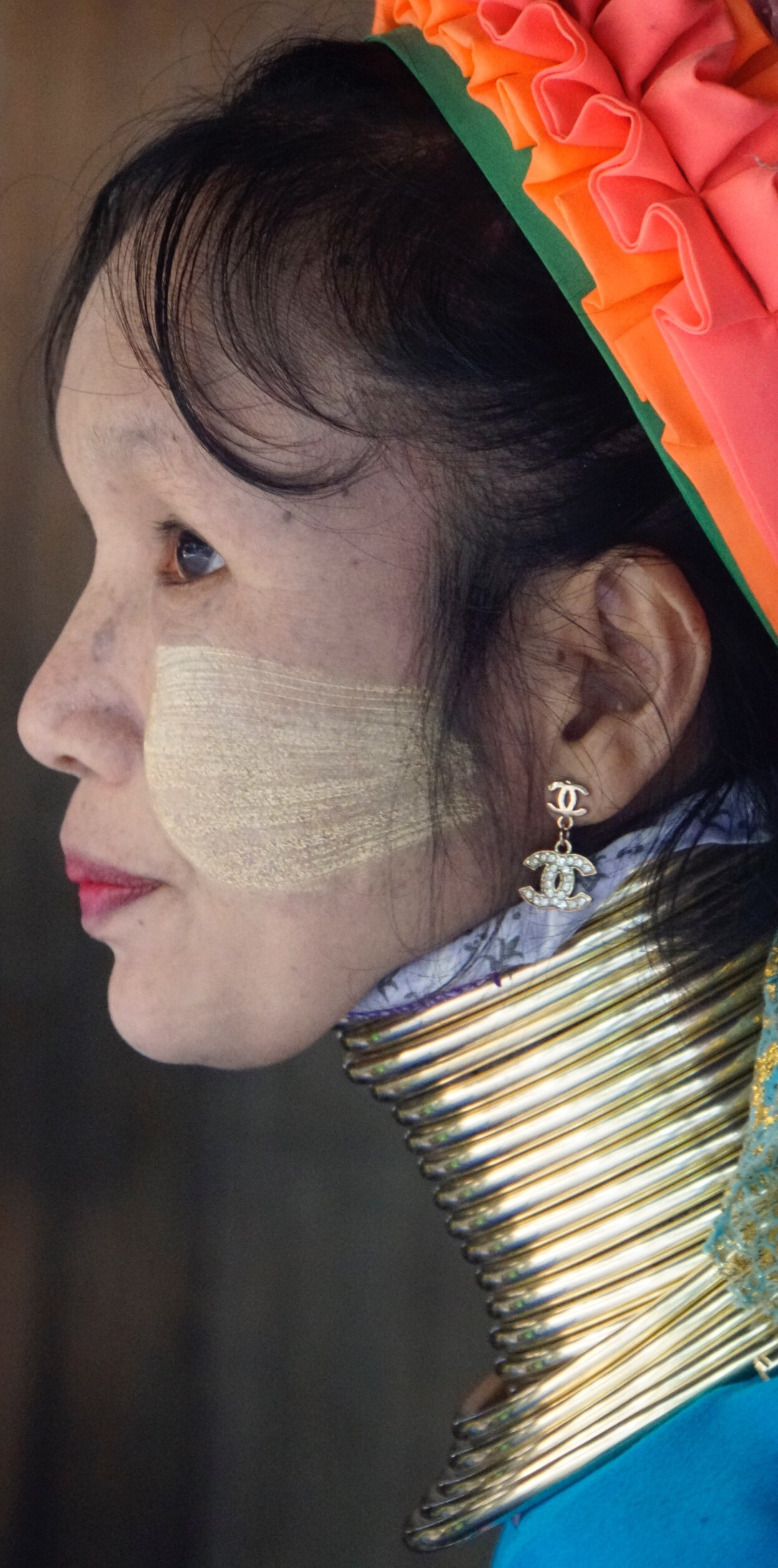 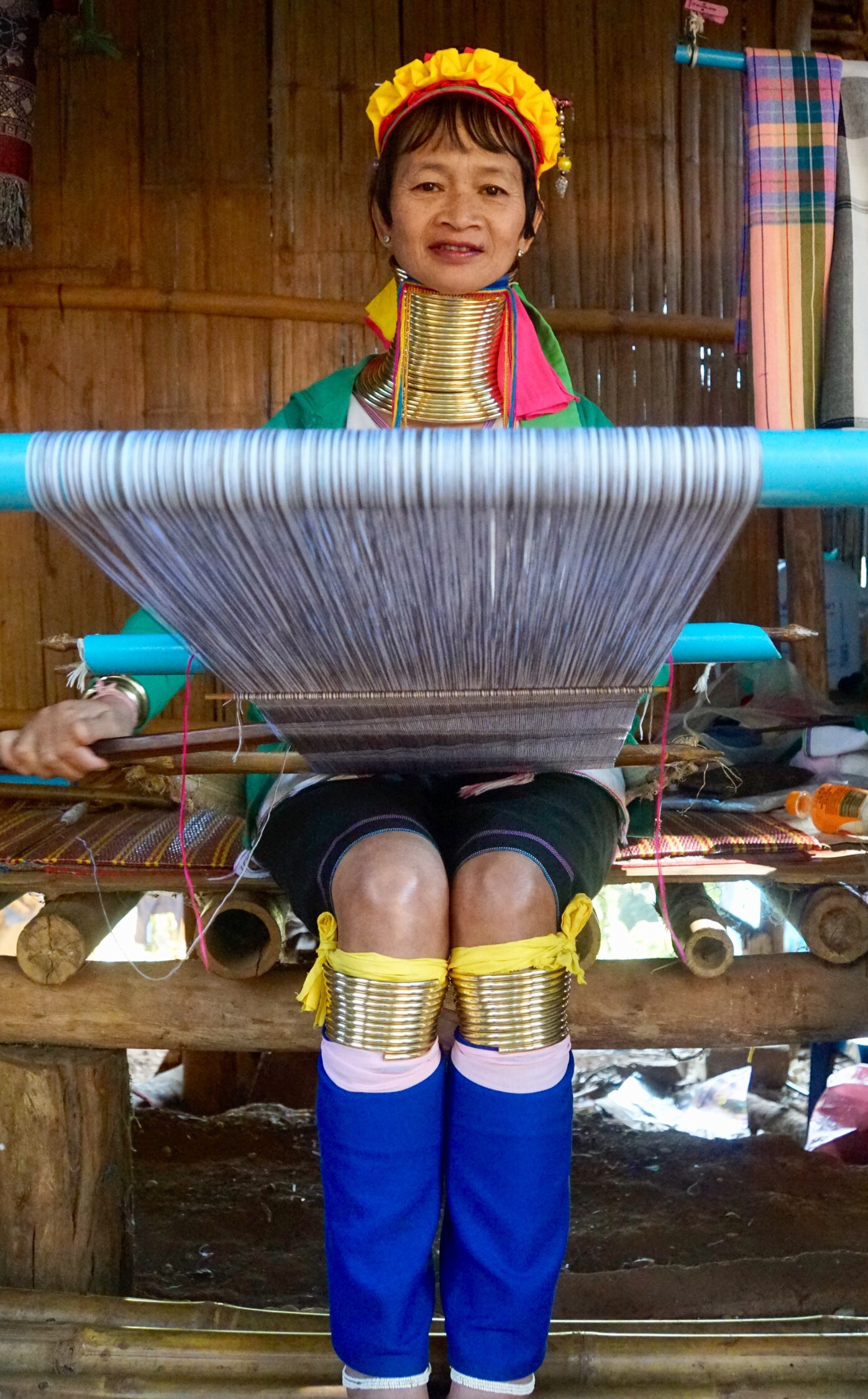 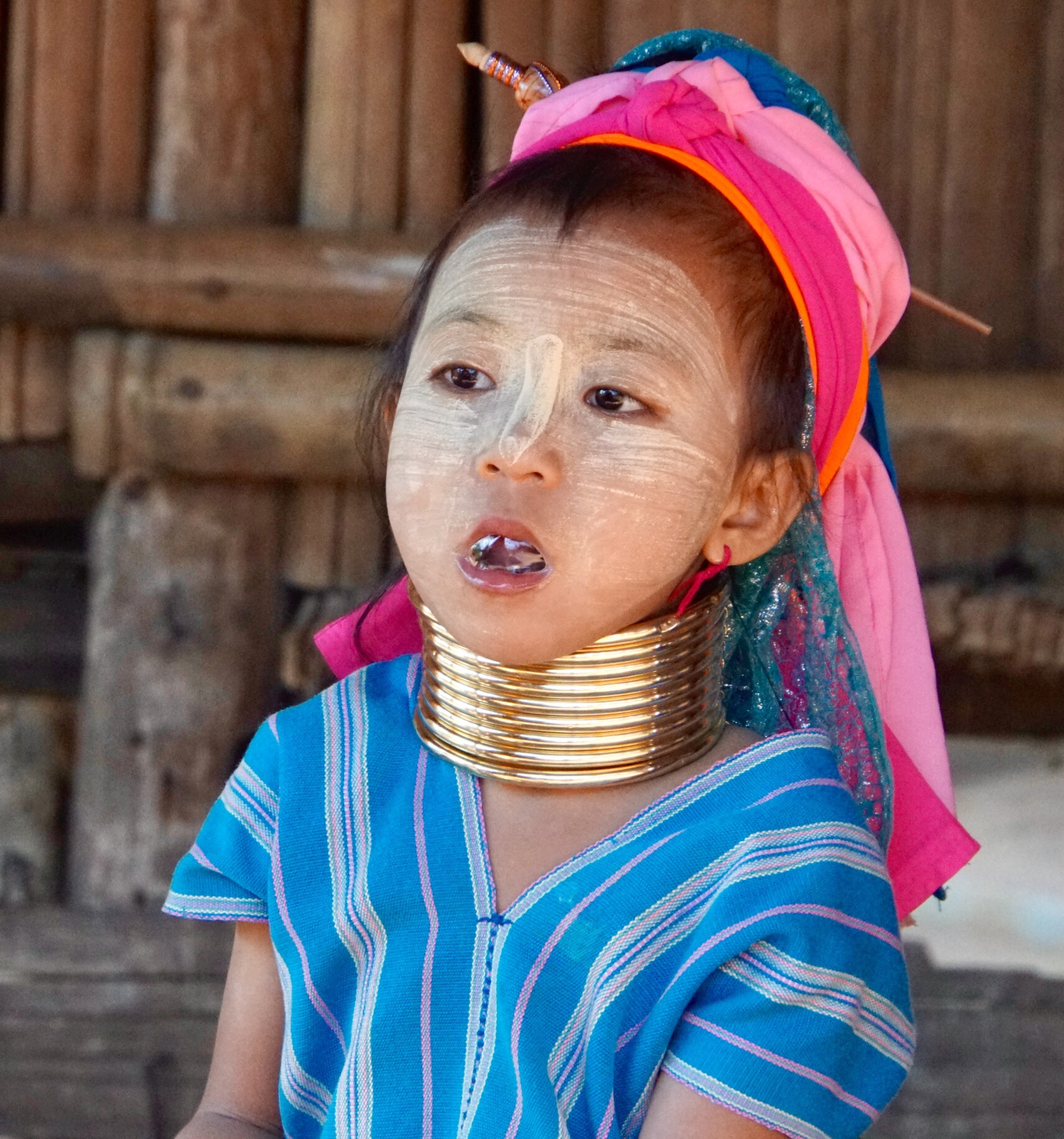 We stopped for lunch, then drove to the border between Thailand and Myanmar, and walked through customs on both sides of the border, feeling slightly uncomfortable at having to leave our passports at the border. We walked through the small border town and it’s market (after a tuk-tuk ride to the center of town). We stopped for lunch, then drove to the border between Thailand and Myanmar, and walked through customs on both sides of the border, feeling slightly uncomfortable at having to leave our passports at the border. We walked through the small border town and it’s market (after a tuk-tuk ride to the center of town). 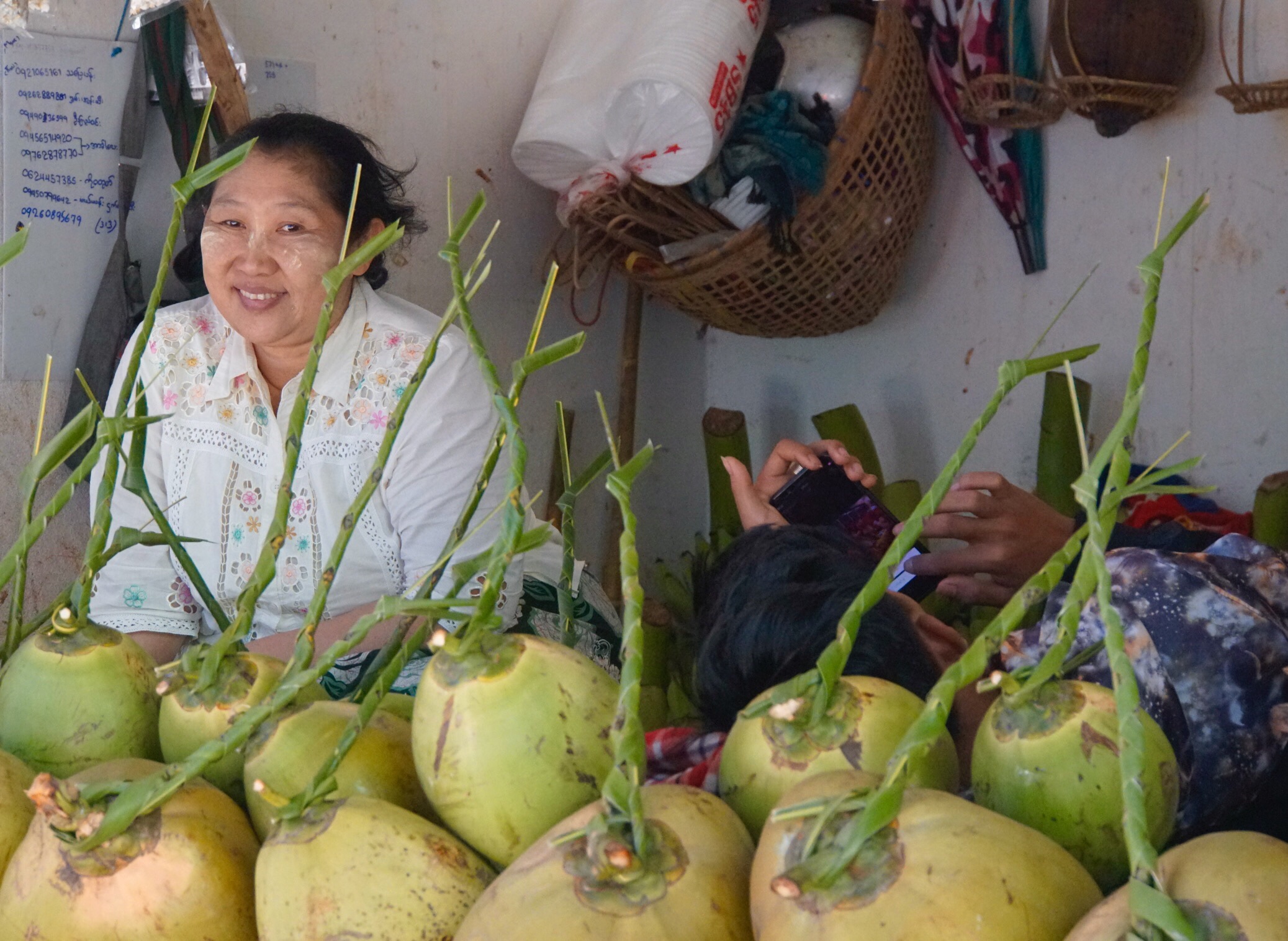 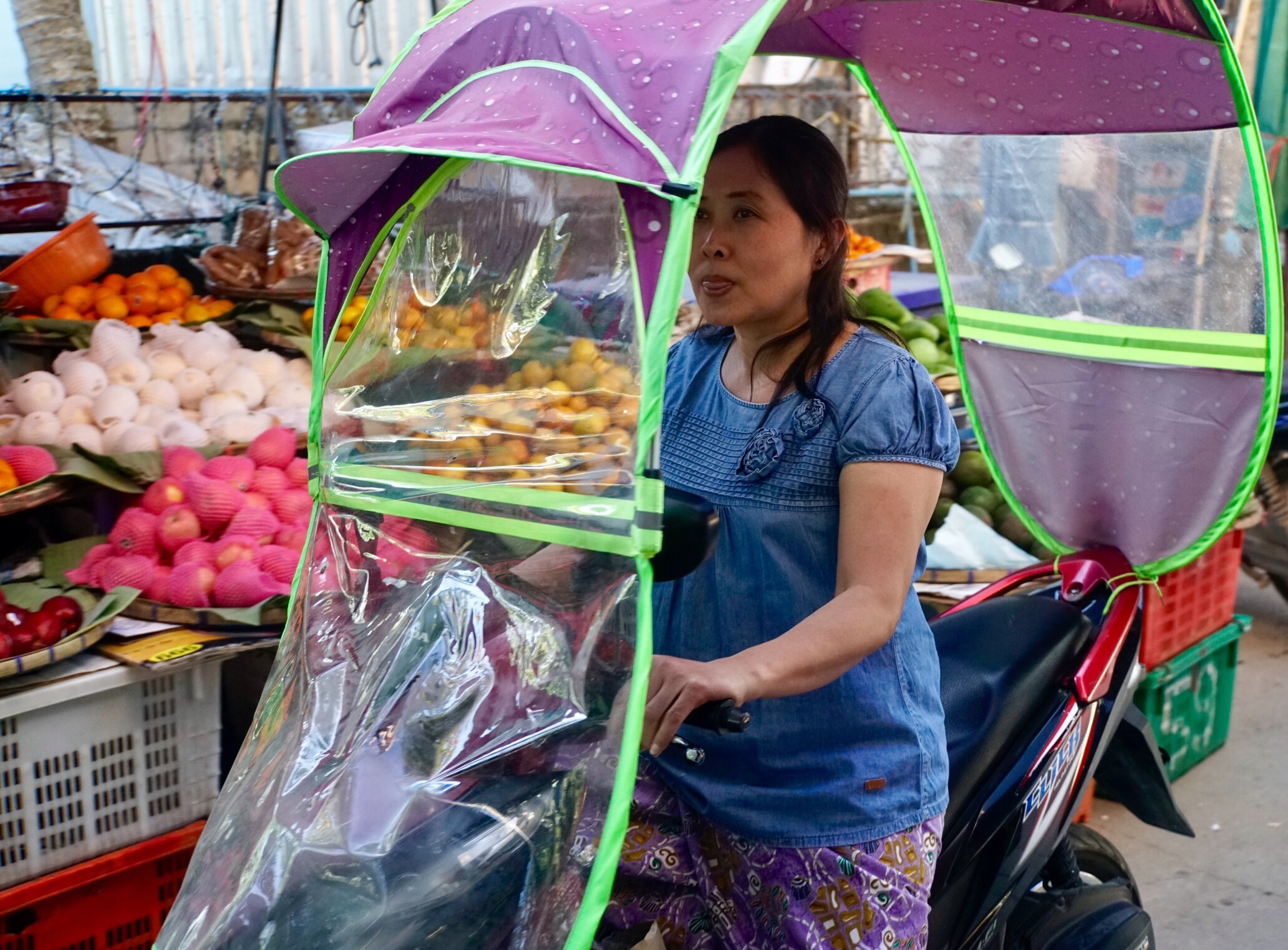 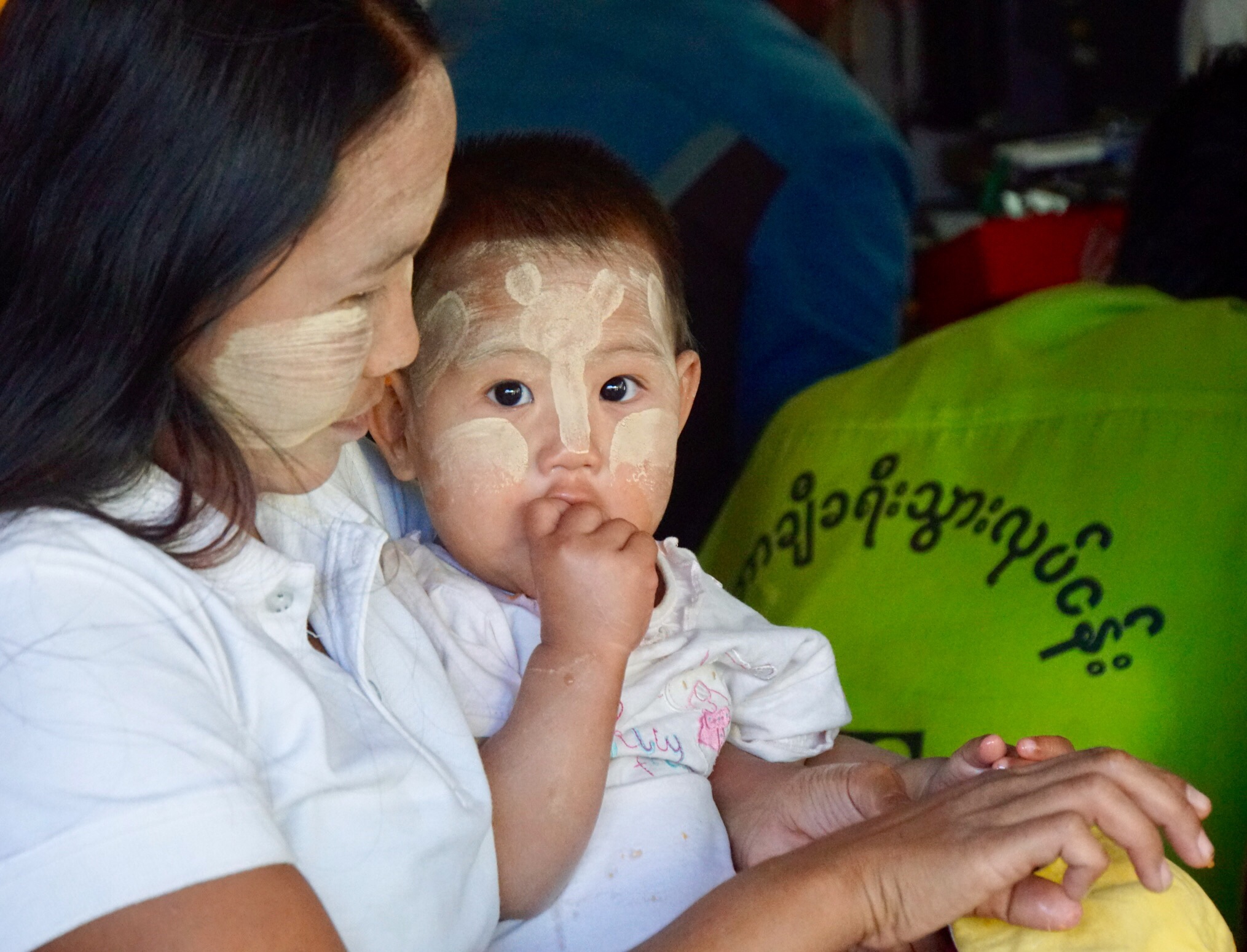 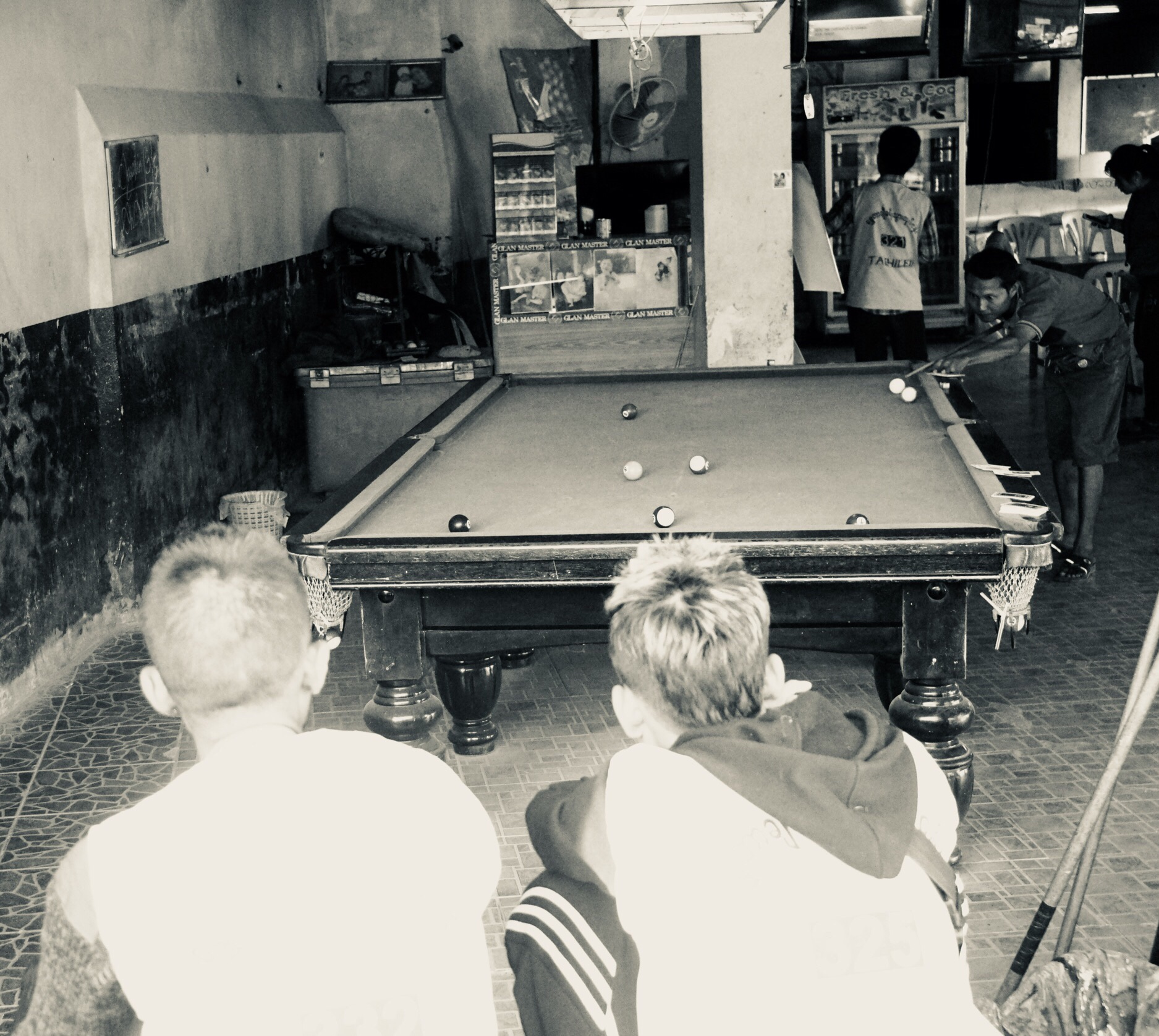 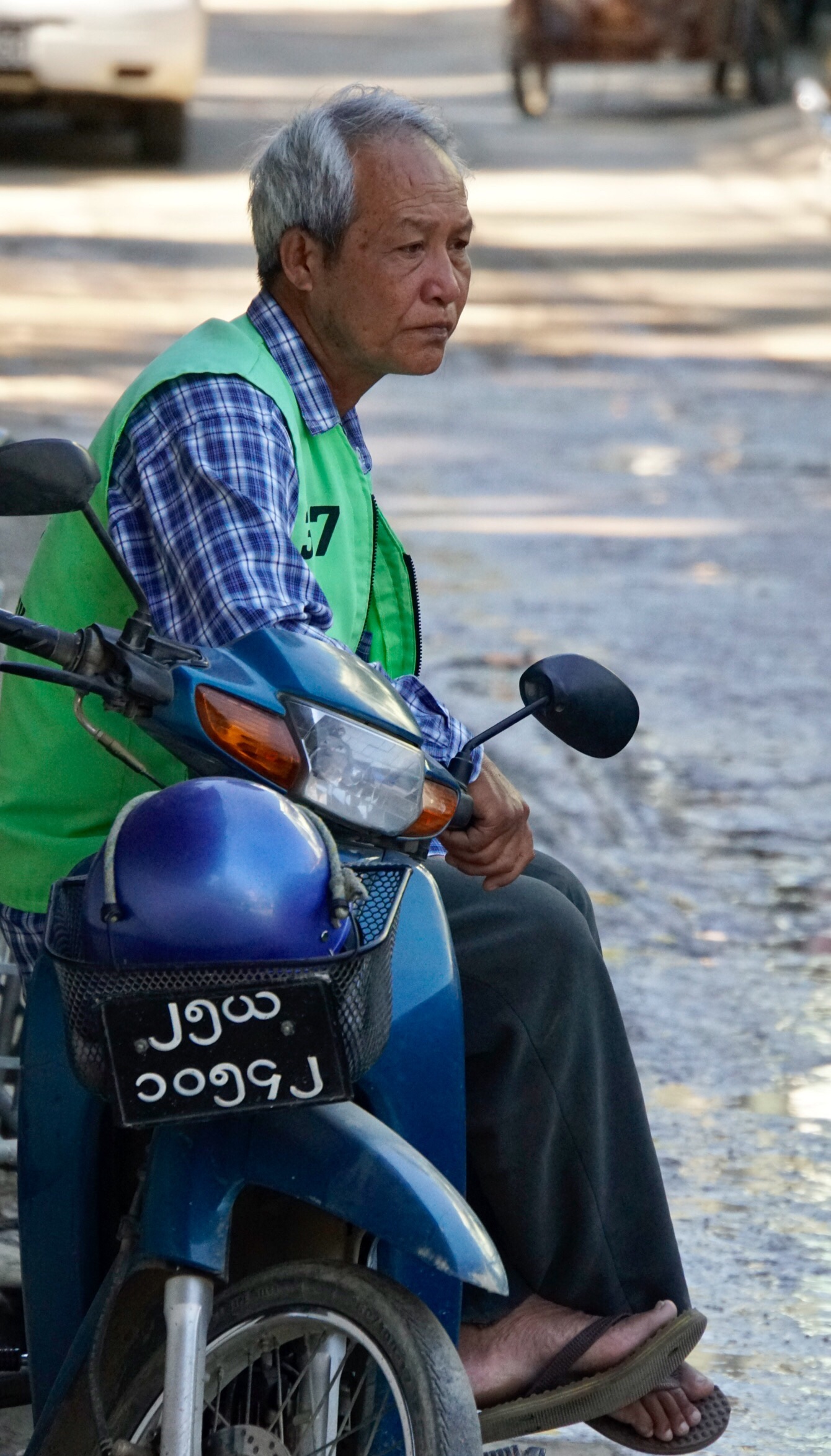 
Then took another tuk -tuk up to a monastery on a hill, modeled after the fabulous Showedegan in Yangon. The whole afternoon provided enough interest and photographic opportunities to feel worthwhile. 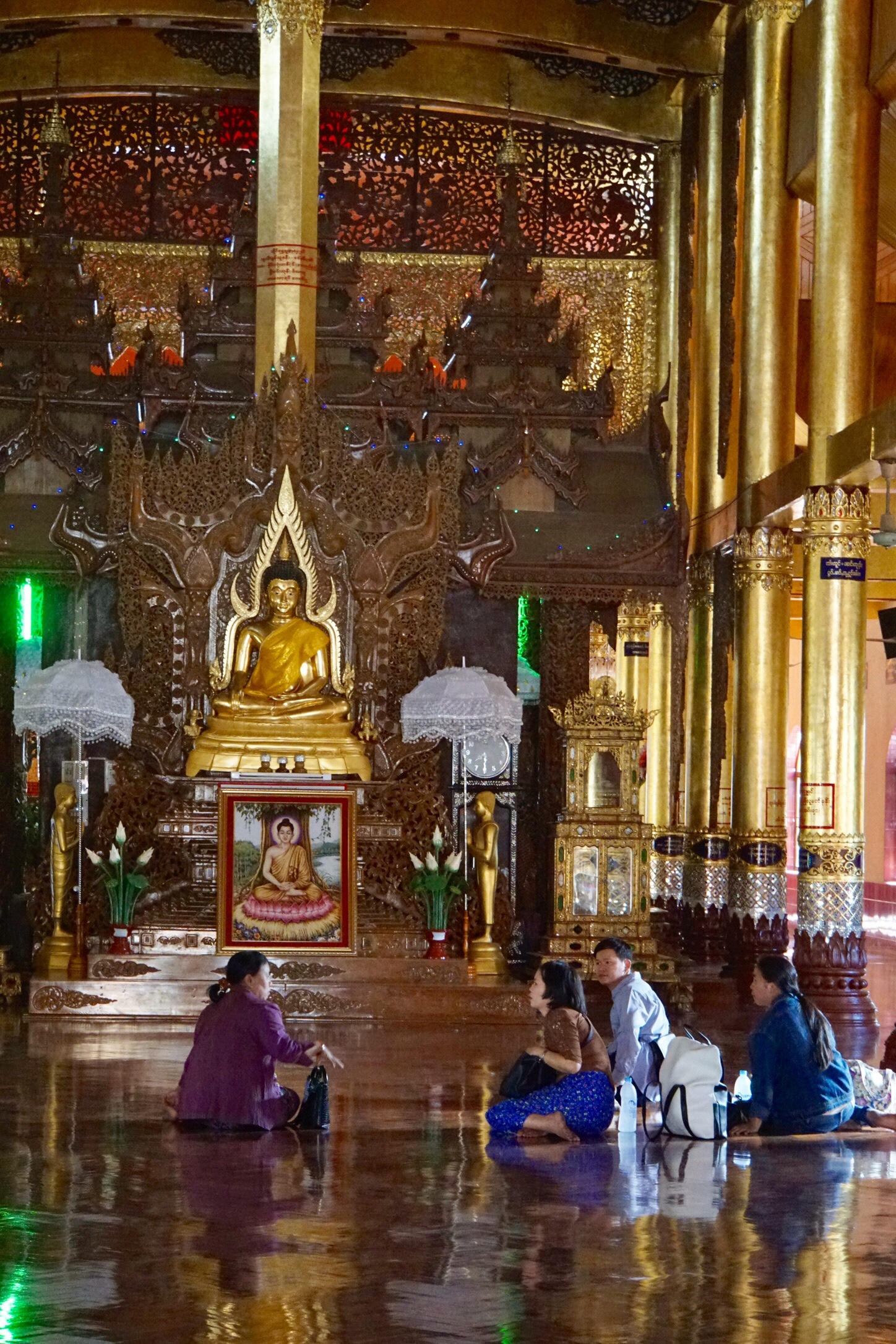 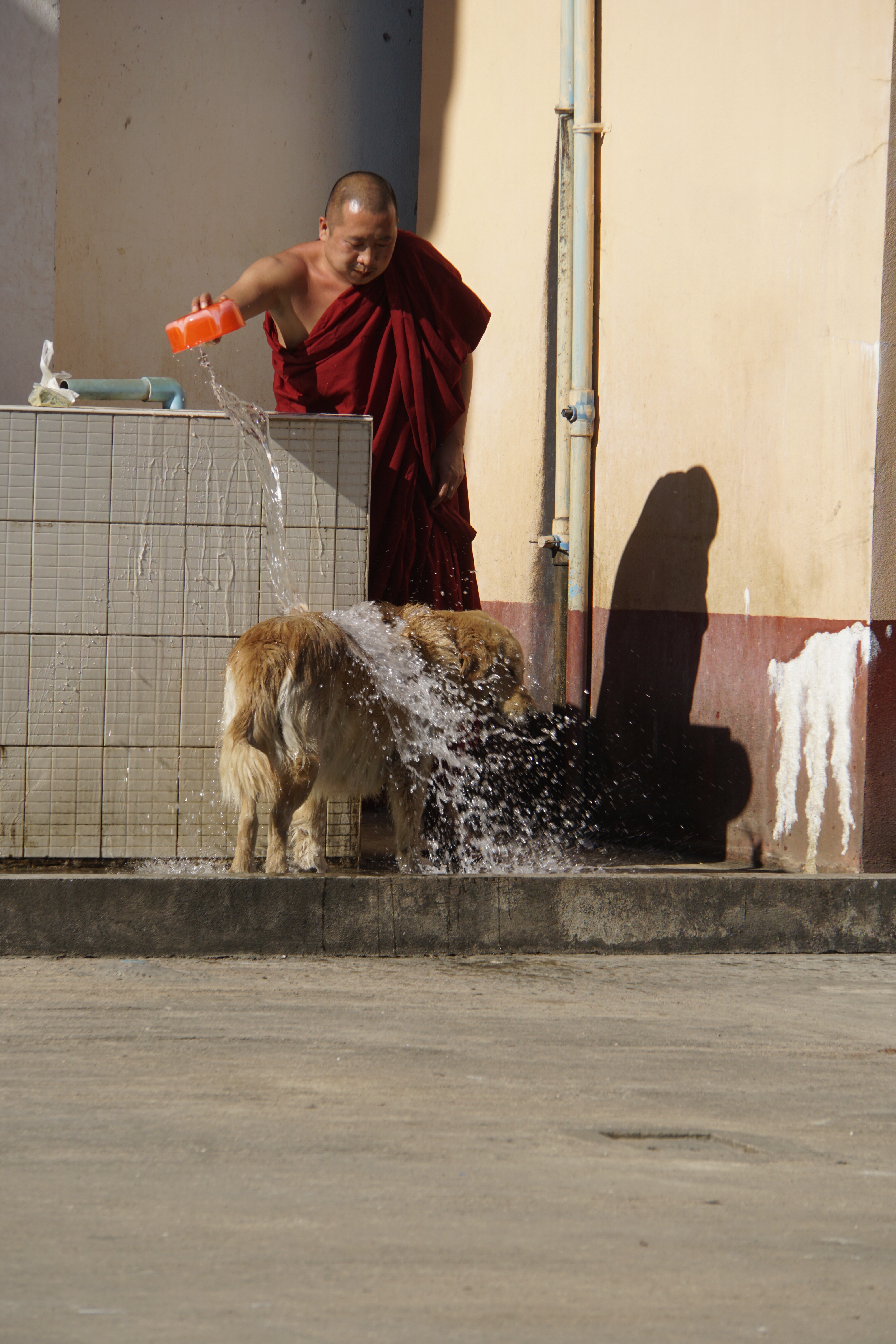
Drove back to the hotel and had dinner in the hotel restaurant.
Feeling much better than yesterday. May be without internet for the next day or two, but will post when I can.
|
|















 We walked through a small market behind one of the temples.
We walked through a small market behind one of the temples.























 We drive on to the UNESCO World Heritage site of Luang Prabang, where we check into our hotel. Immediately after checking in, our guide, Pan, leader, Karl, and Carol and I set out to the Luang Prabang hospital to have my hip examined. The doctor concludes that it’s a muscle problem, that nothing is broken and X-rays are not necessary. He prescribes painkillers and muscle relaxants and we drive back to the hotel and prepare to meet the group for dinner. This all comes as quite a relief tome, as I had myself on a plane heading home. The total bill for doctor and all meds is $7.
We drive on to the UNESCO World Heritage site of Luang Prabang, where we check into our hotel. Immediately after checking in, our guide, Pan, leader, Karl, and Carol and I set out to the Luang Prabang hospital to have my hip examined. The doctor concludes that it’s a muscle problem, that nothing is broken and X-rays are not necessary. He prescribes painkillers and muscle relaxants and we drive back to the hotel and prepare to meet the group for dinner. This all comes as quite a relief tome, as I had myself on a plane heading home. The total bill for doctor and all meds is $7.








 We stopped for lunch, then drove to the border between Thailand and Myanmar, and walked through customs on both sides of the border, feeling slightly uncomfortable at having to leave our passports at the border. We walked through the small border town and it’s market (after a tuk-tuk ride to the center of town).
We stopped for lunch, then drove to the border between Thailand and Myanmar, and walked through customs on both sides of the border, feeling slightly uncomfortable at having to leave our passports at the border. We walked through the small border town and it’s market (after a tuk-tuk ride to the center of town). 







